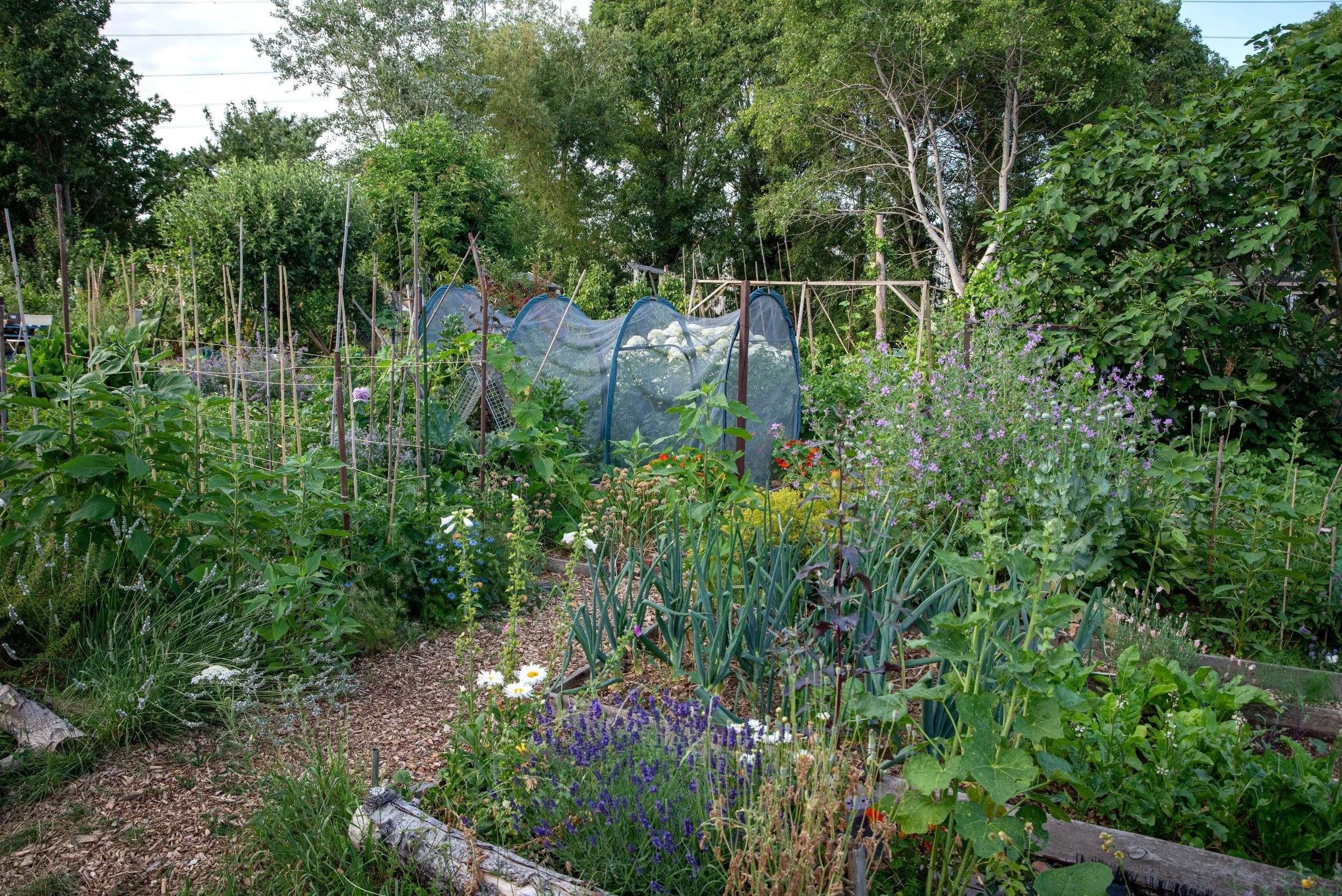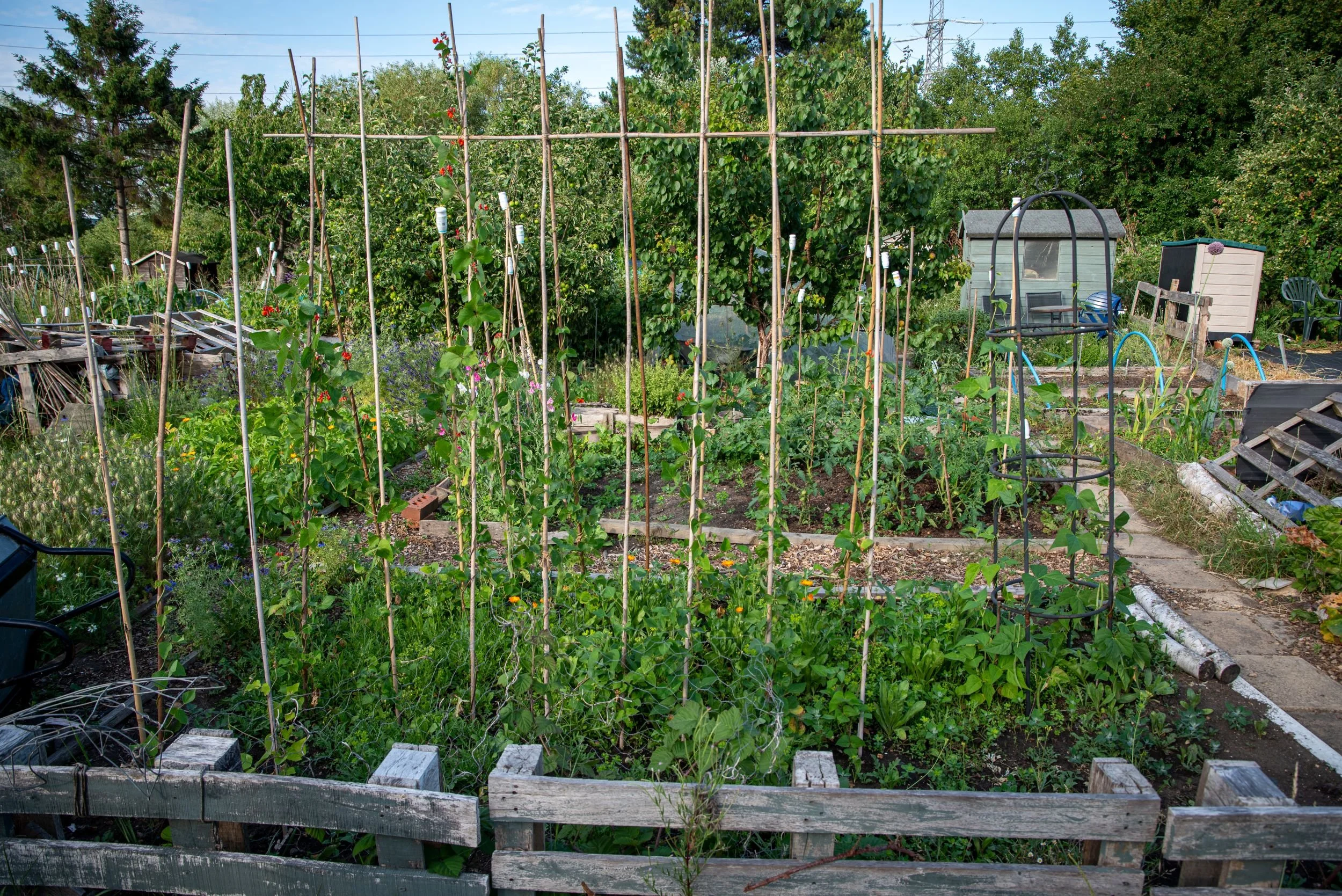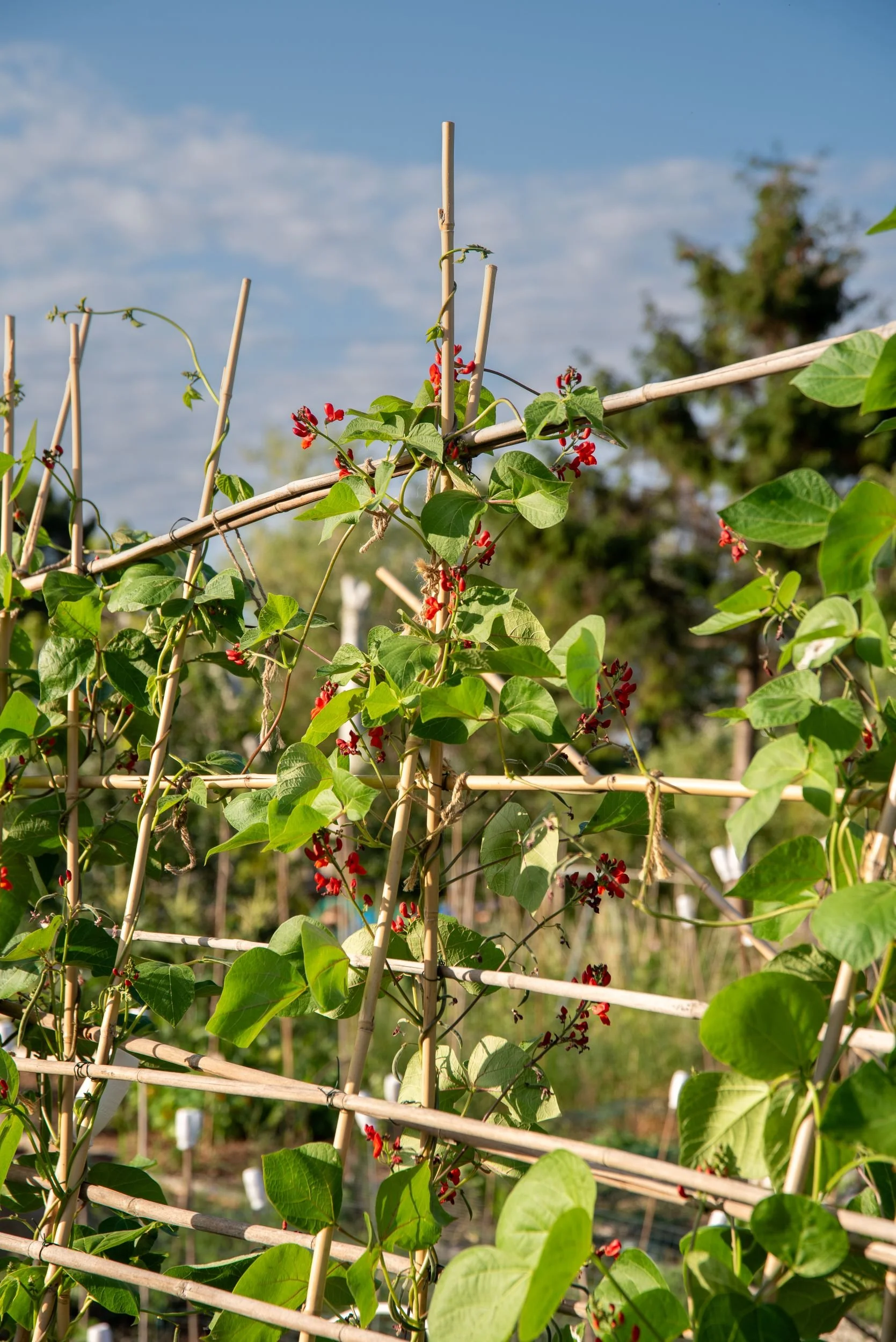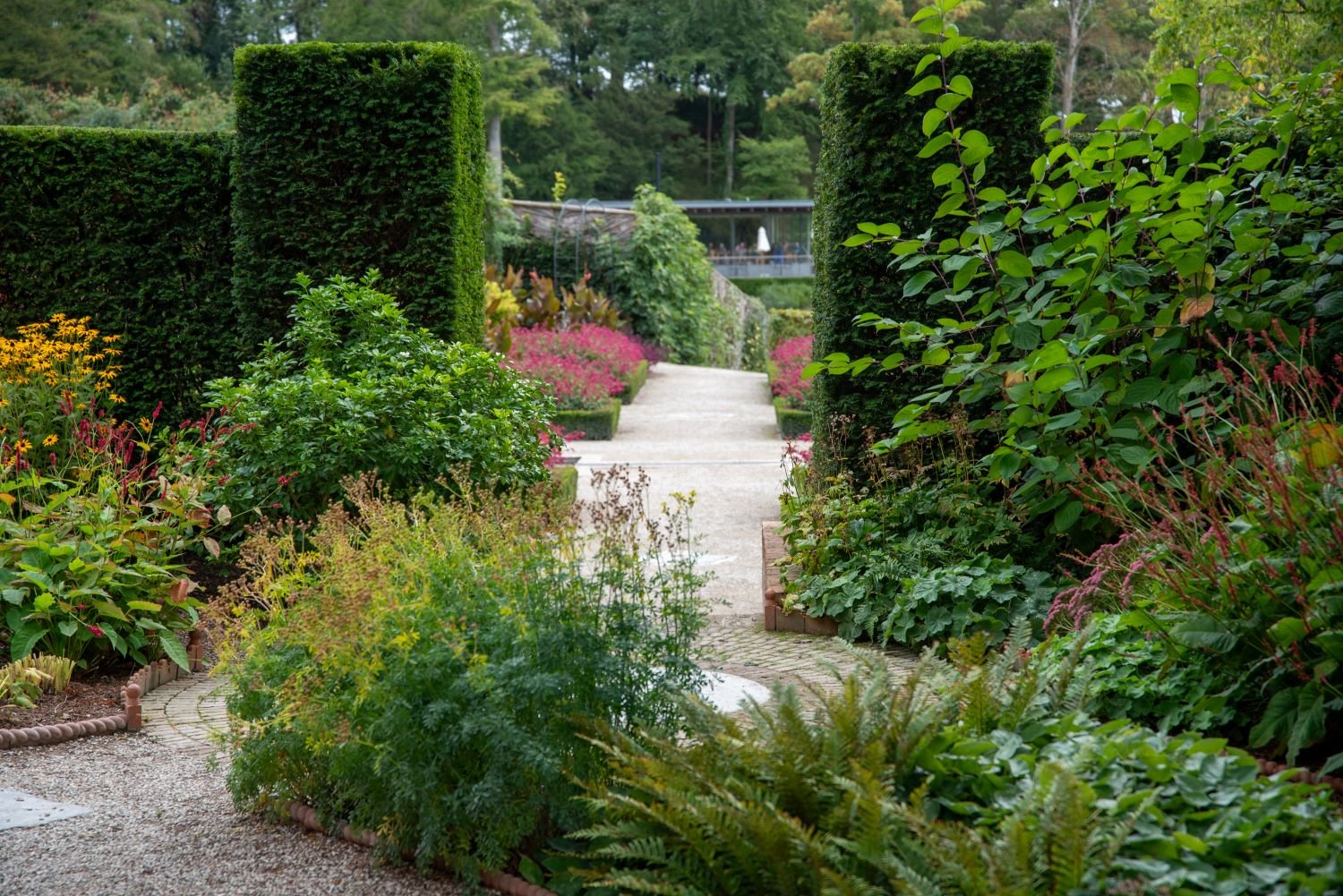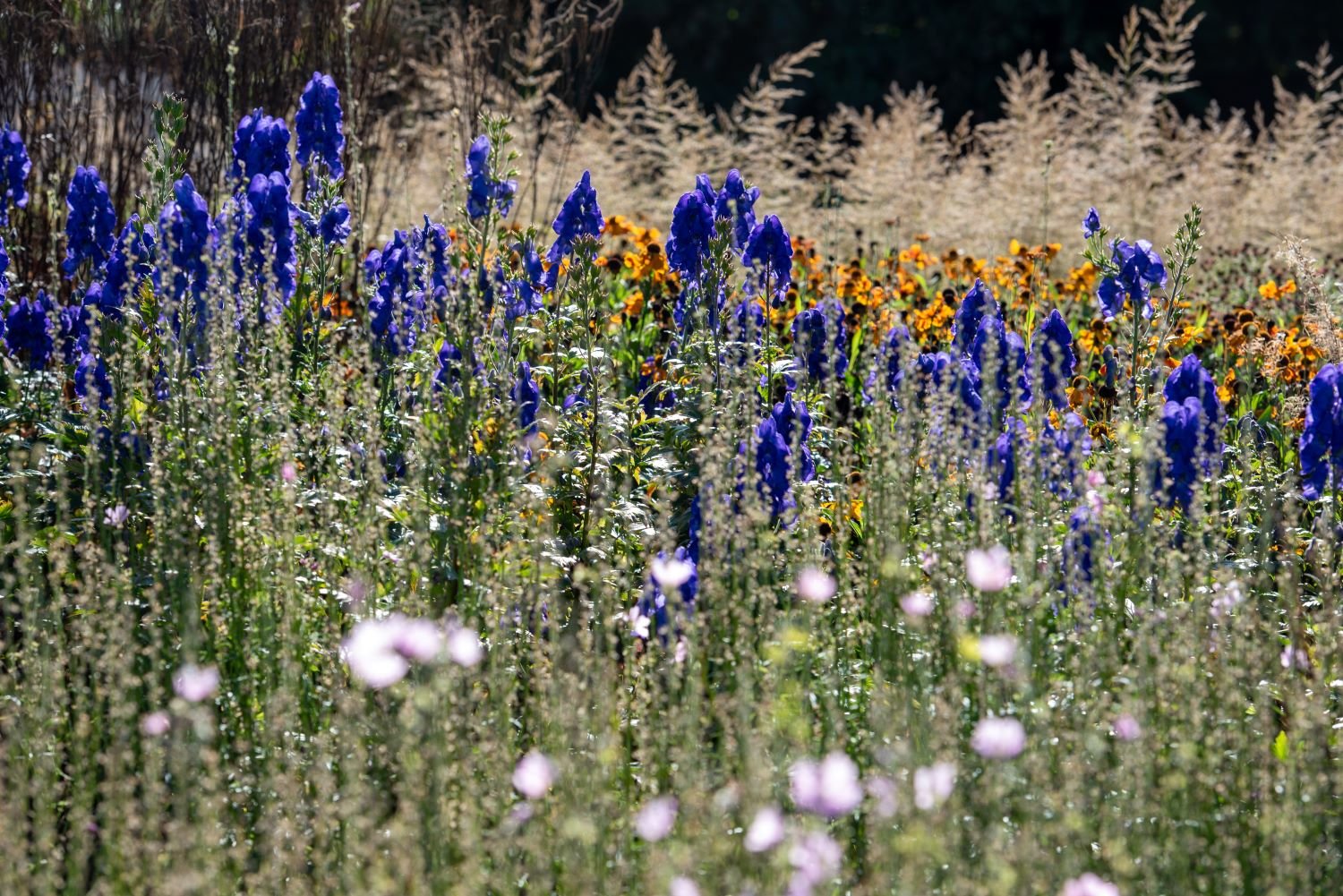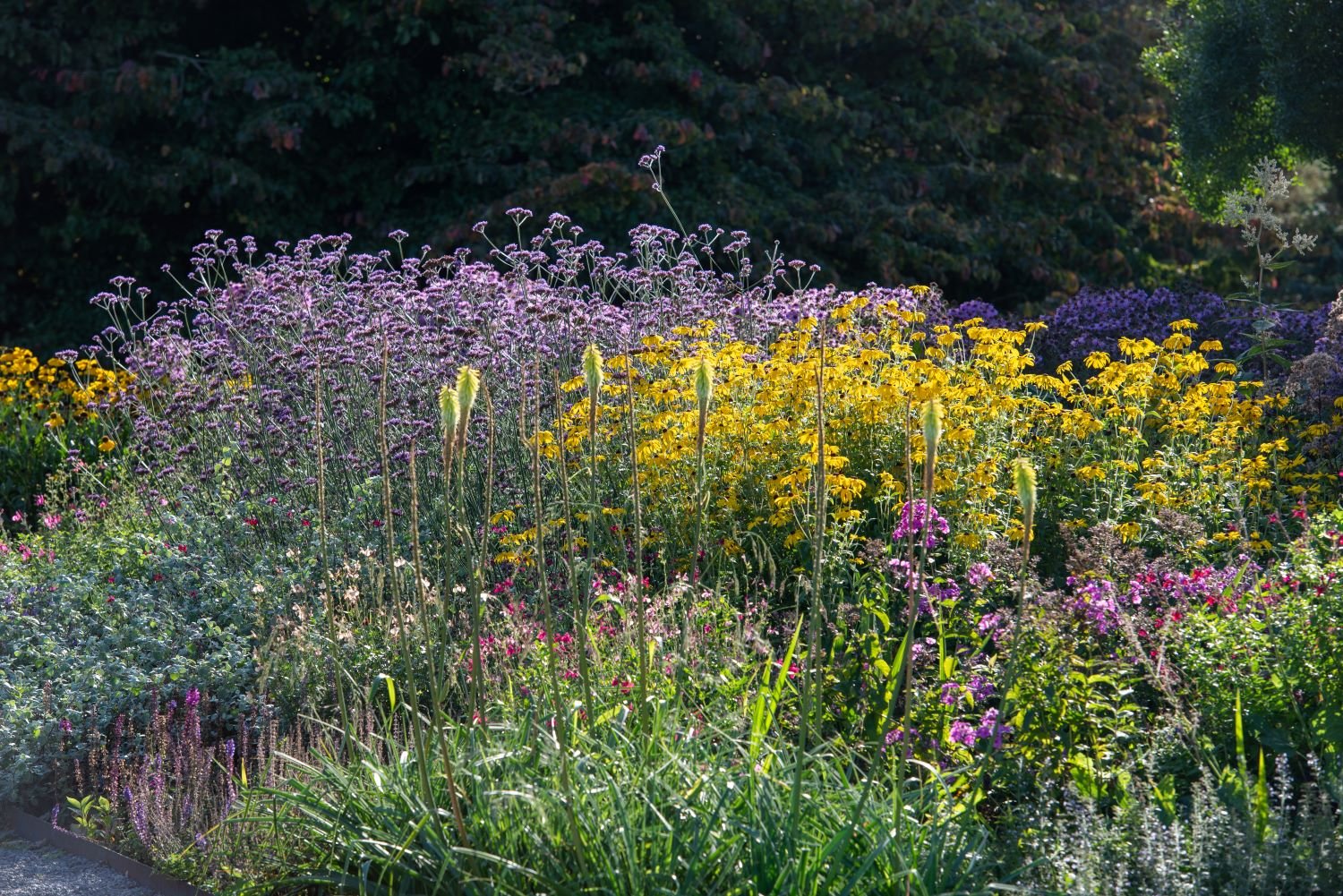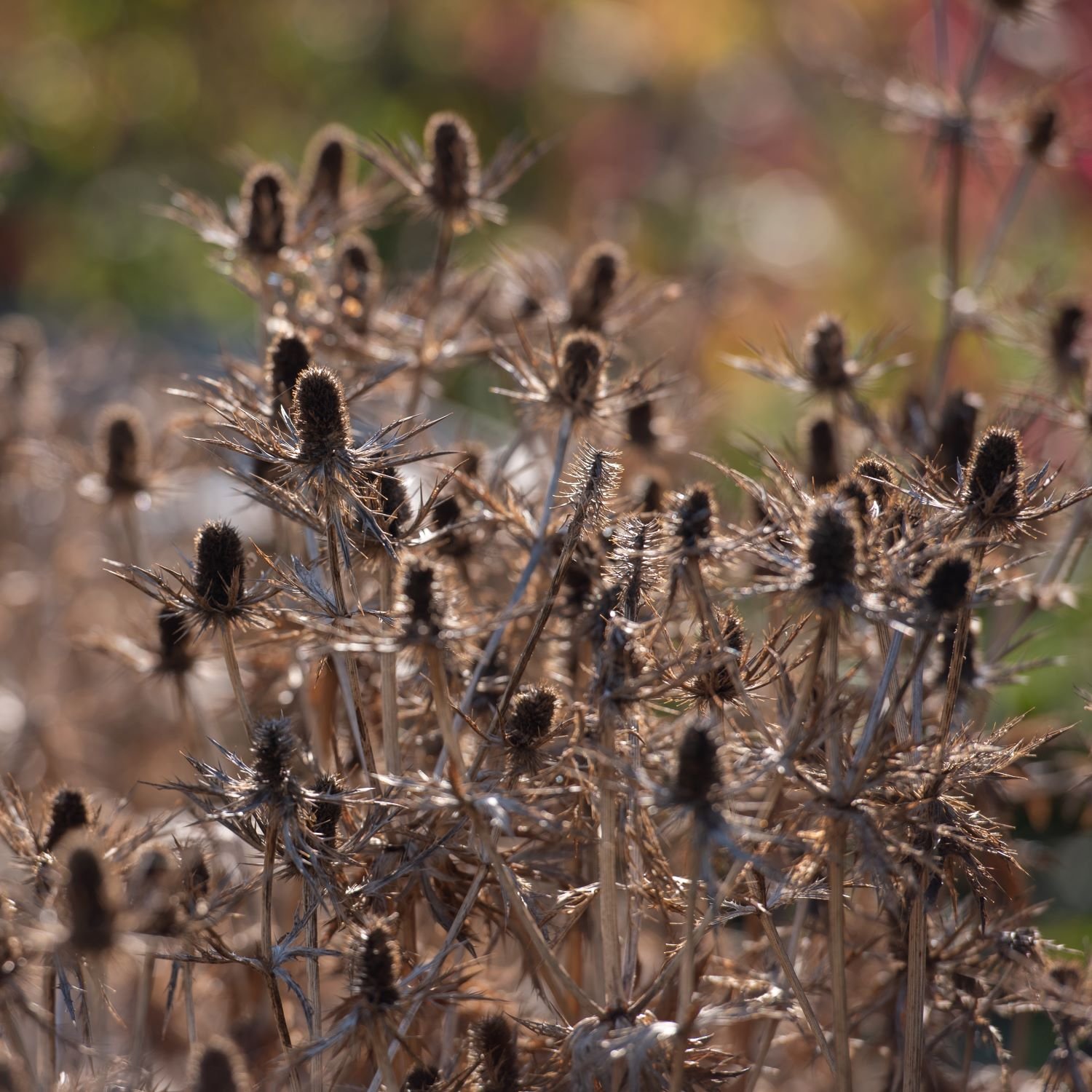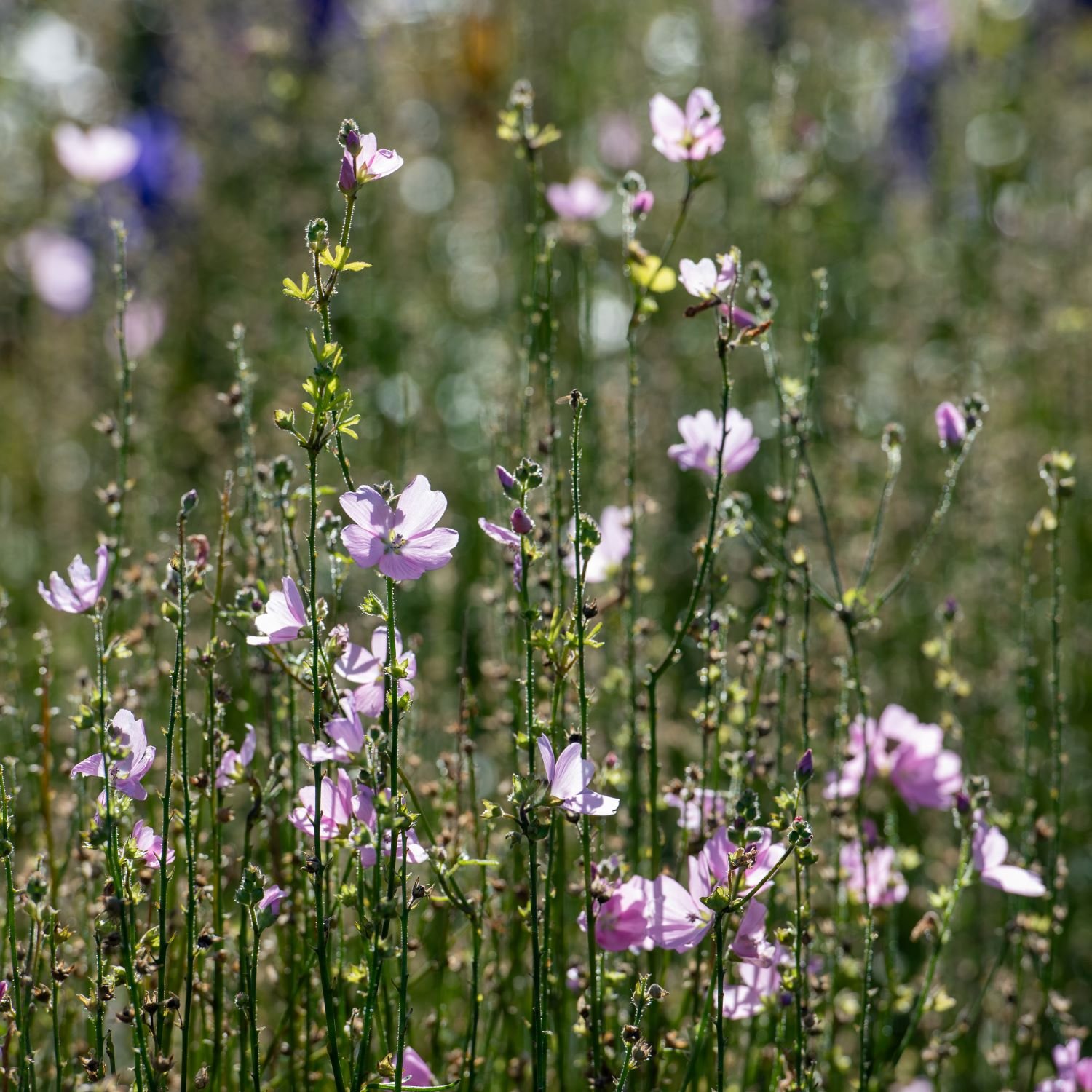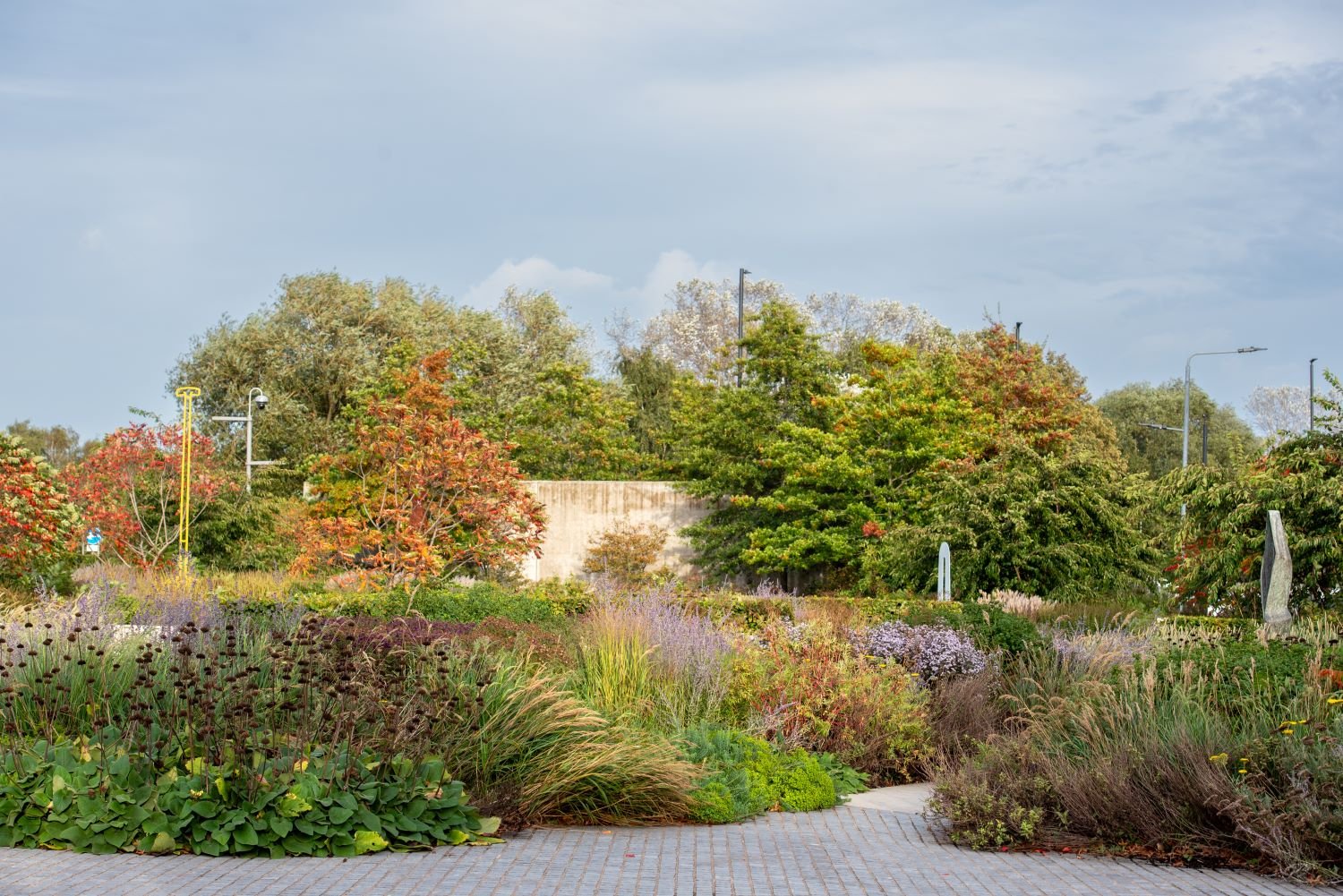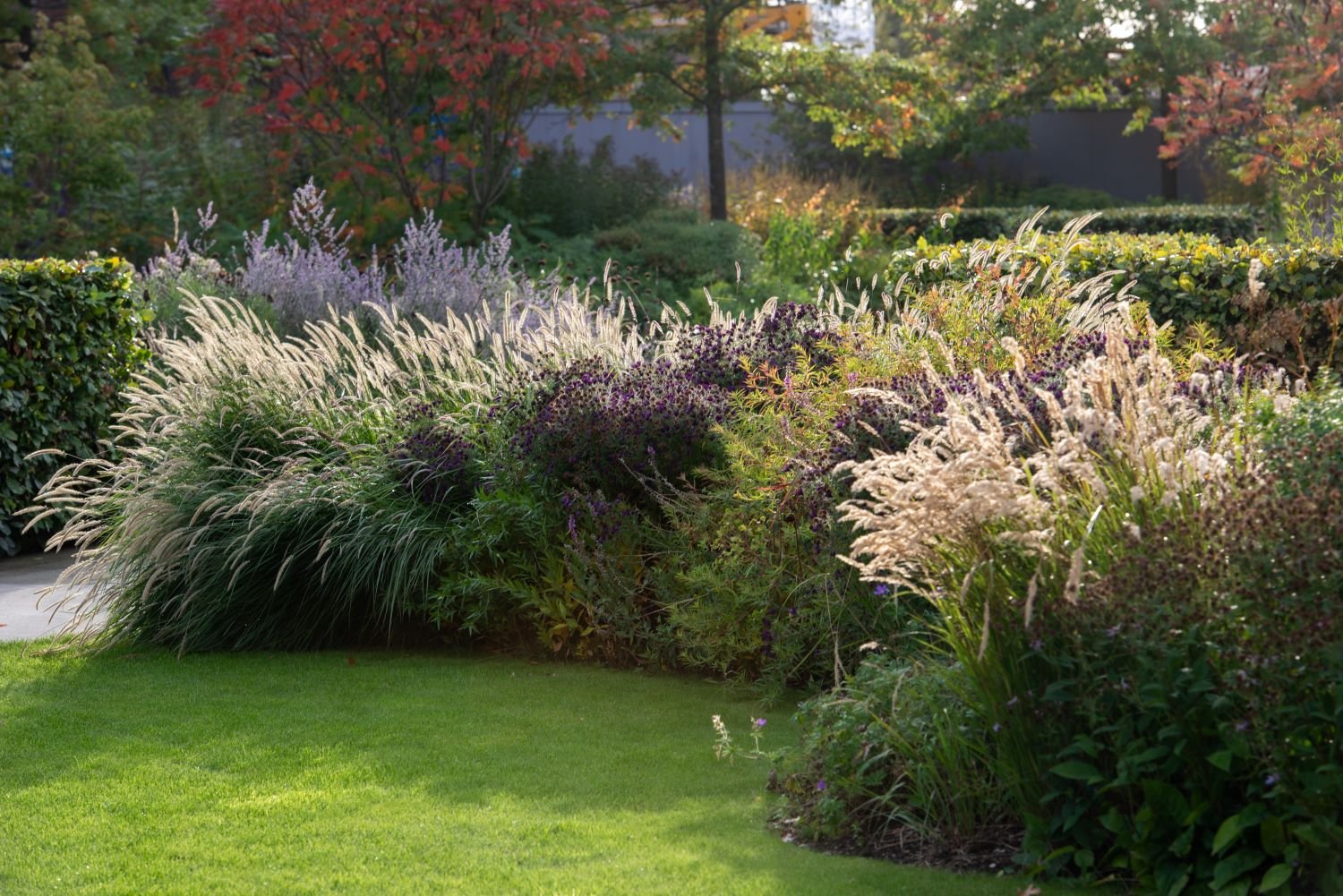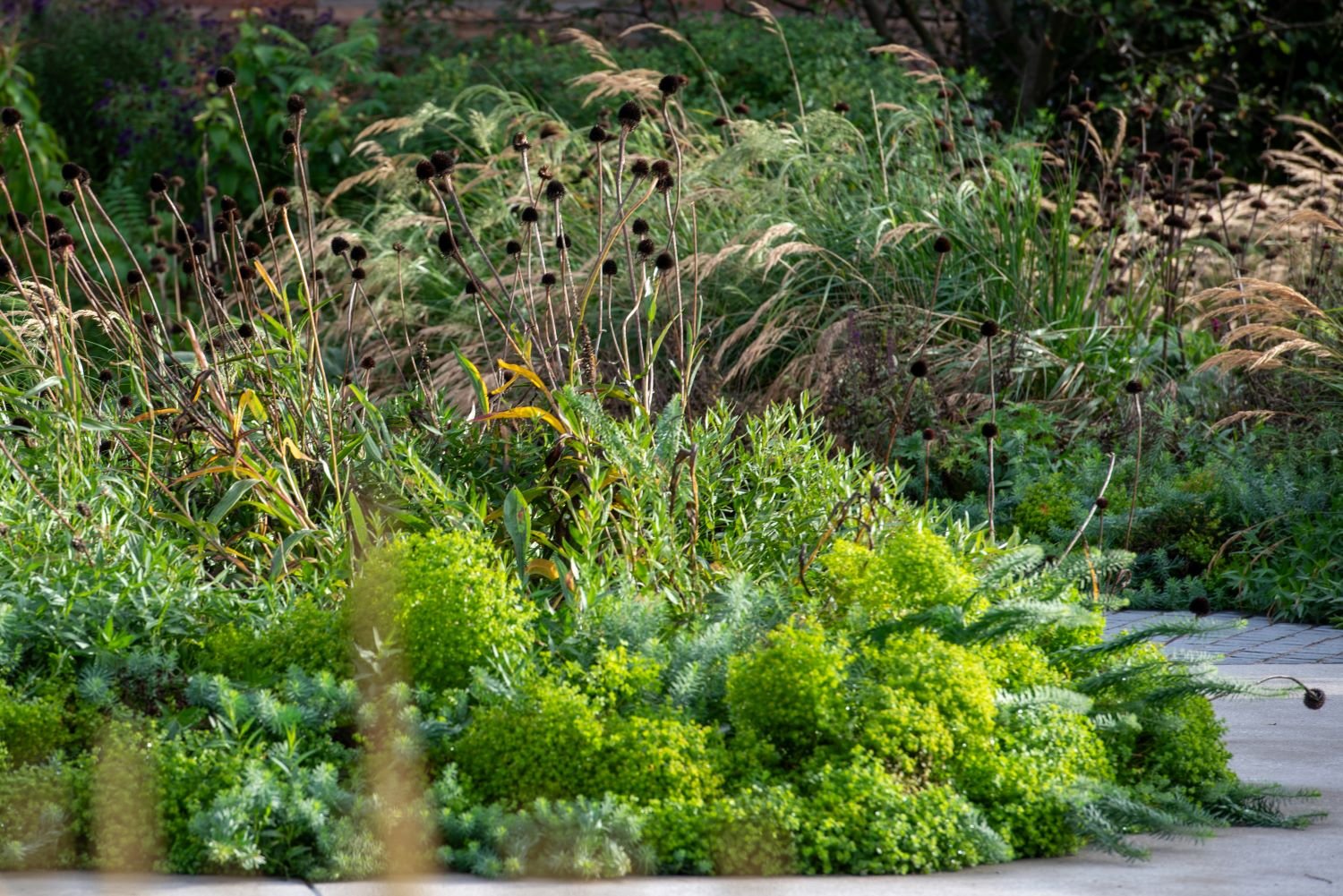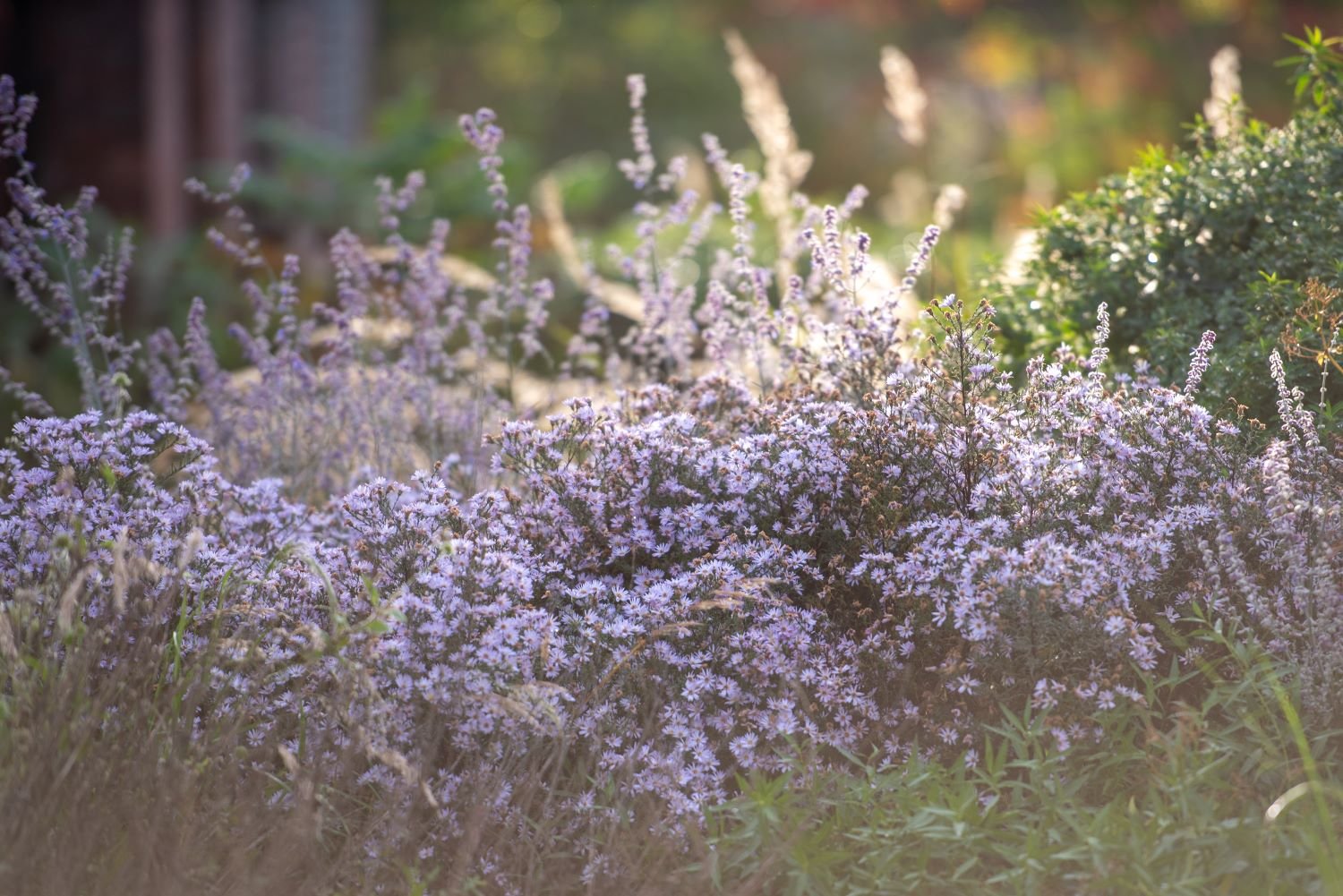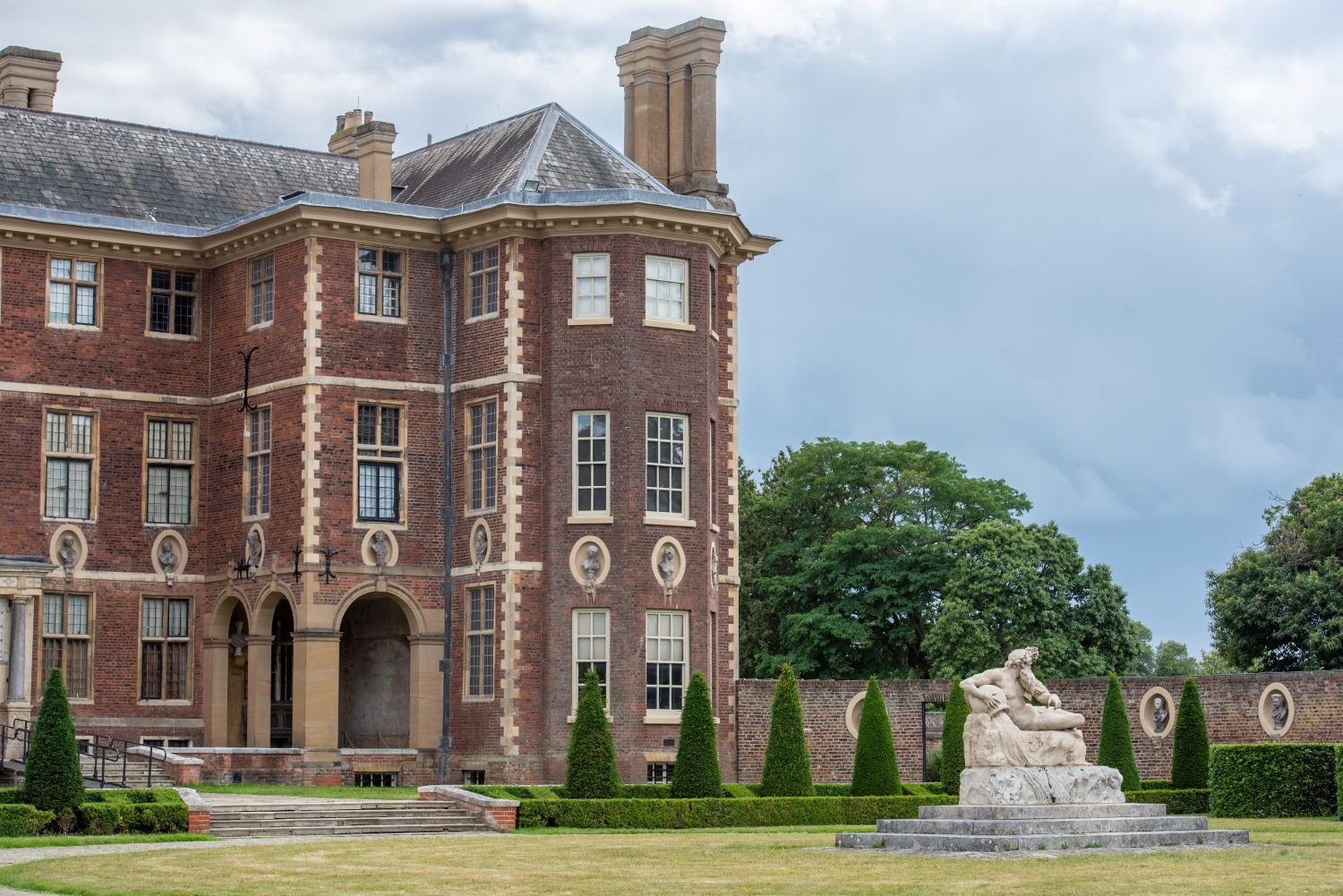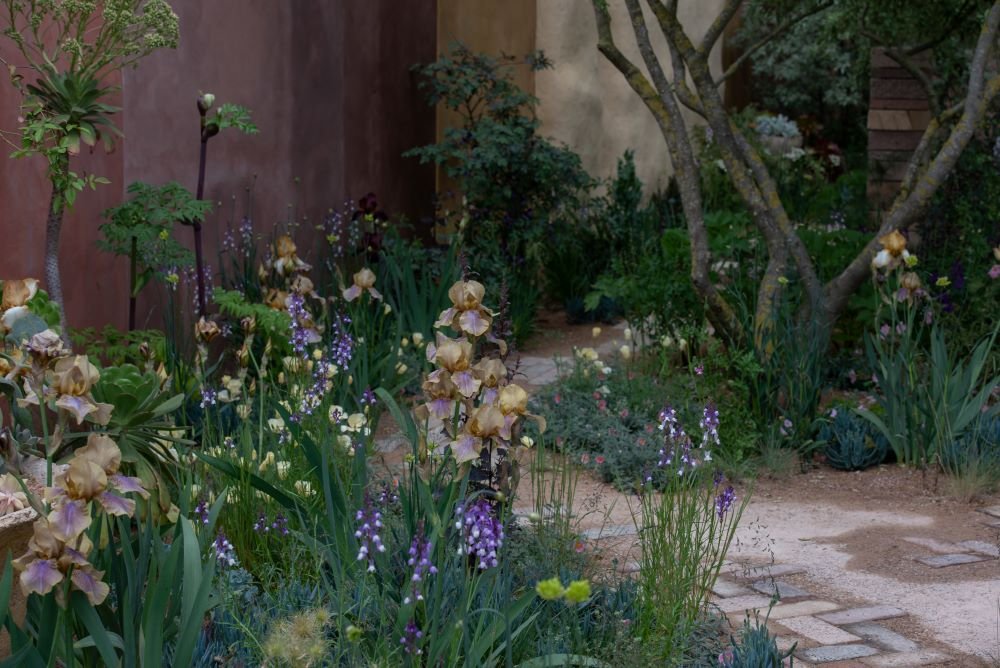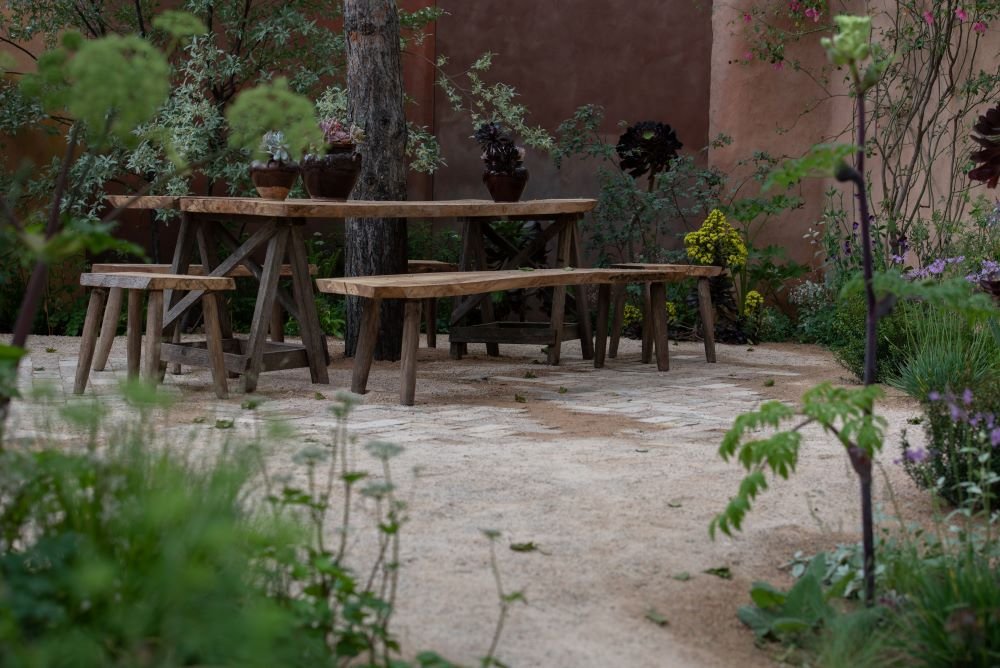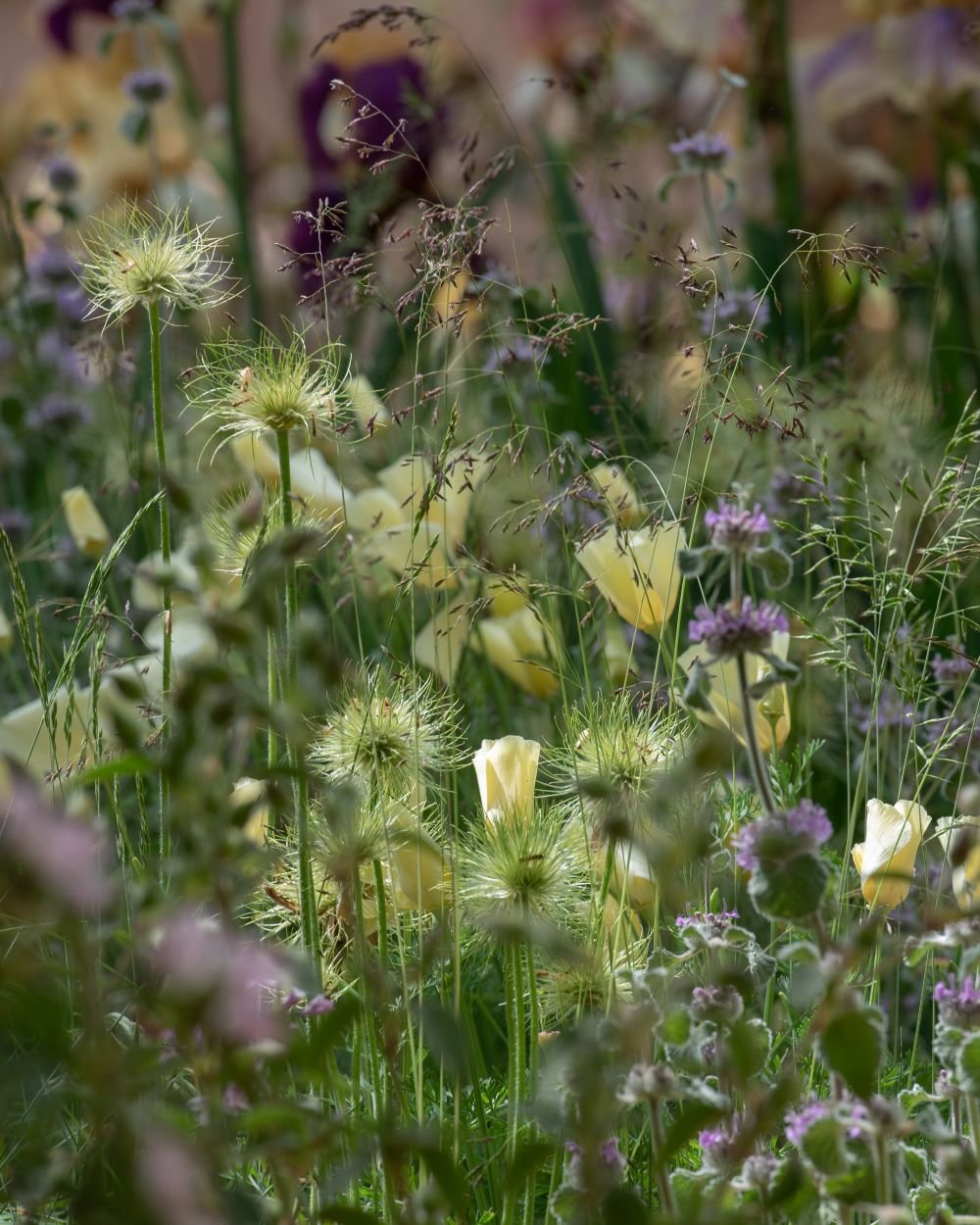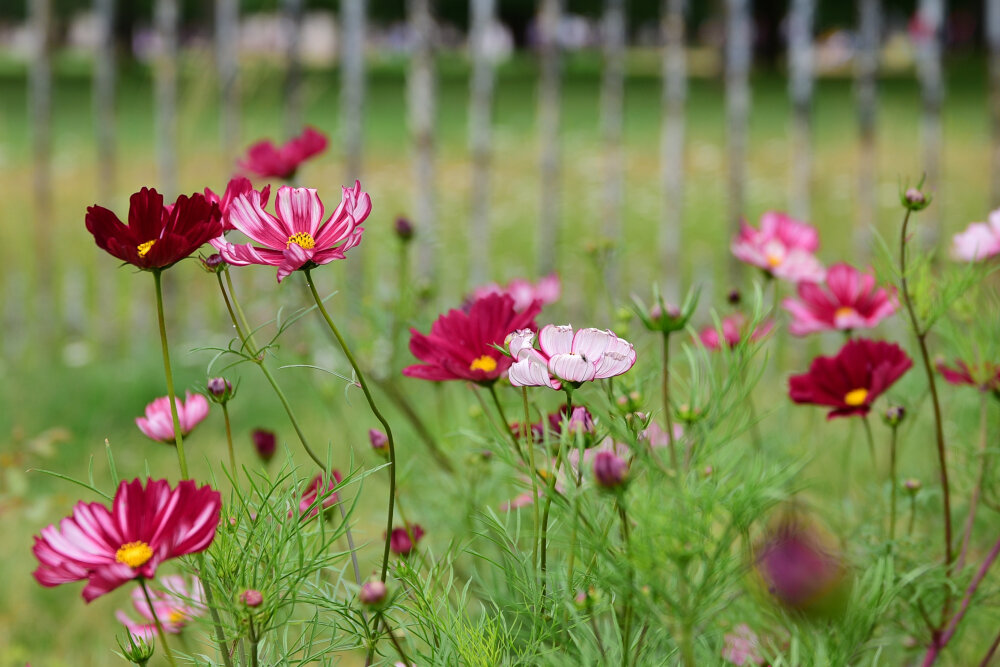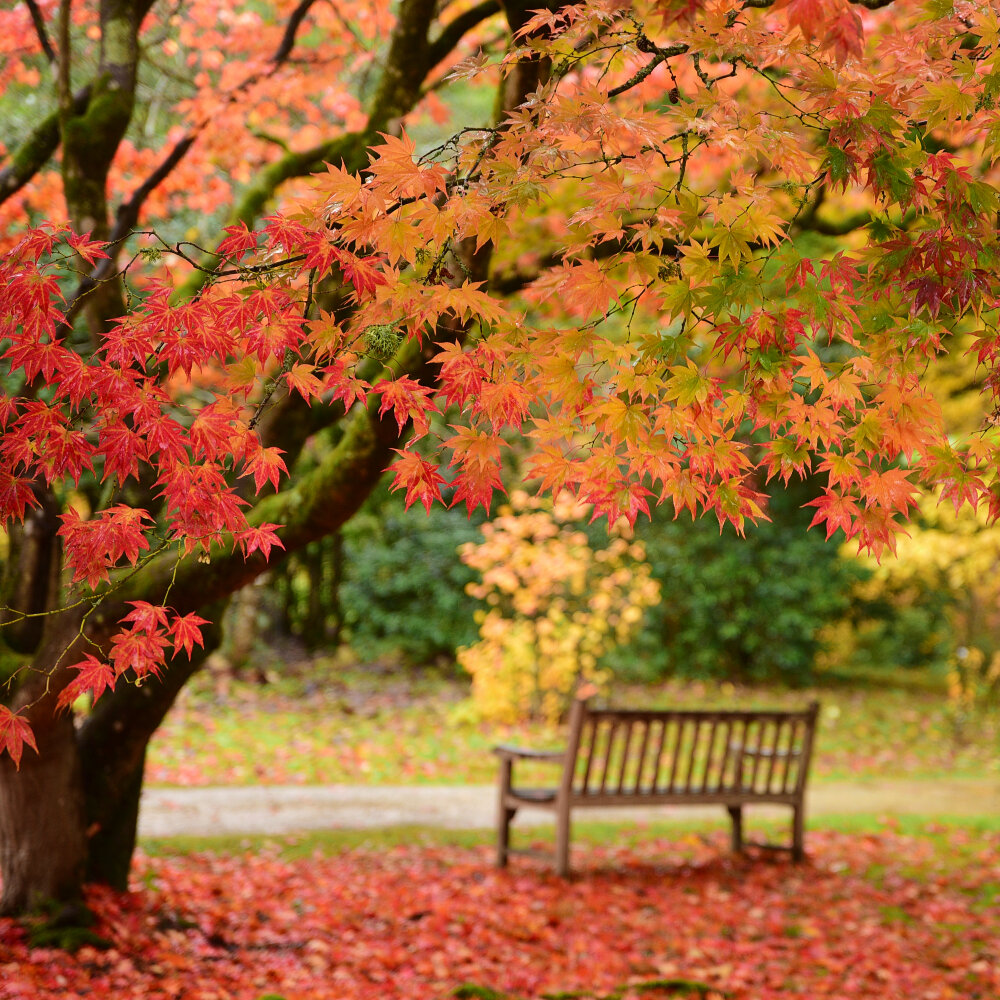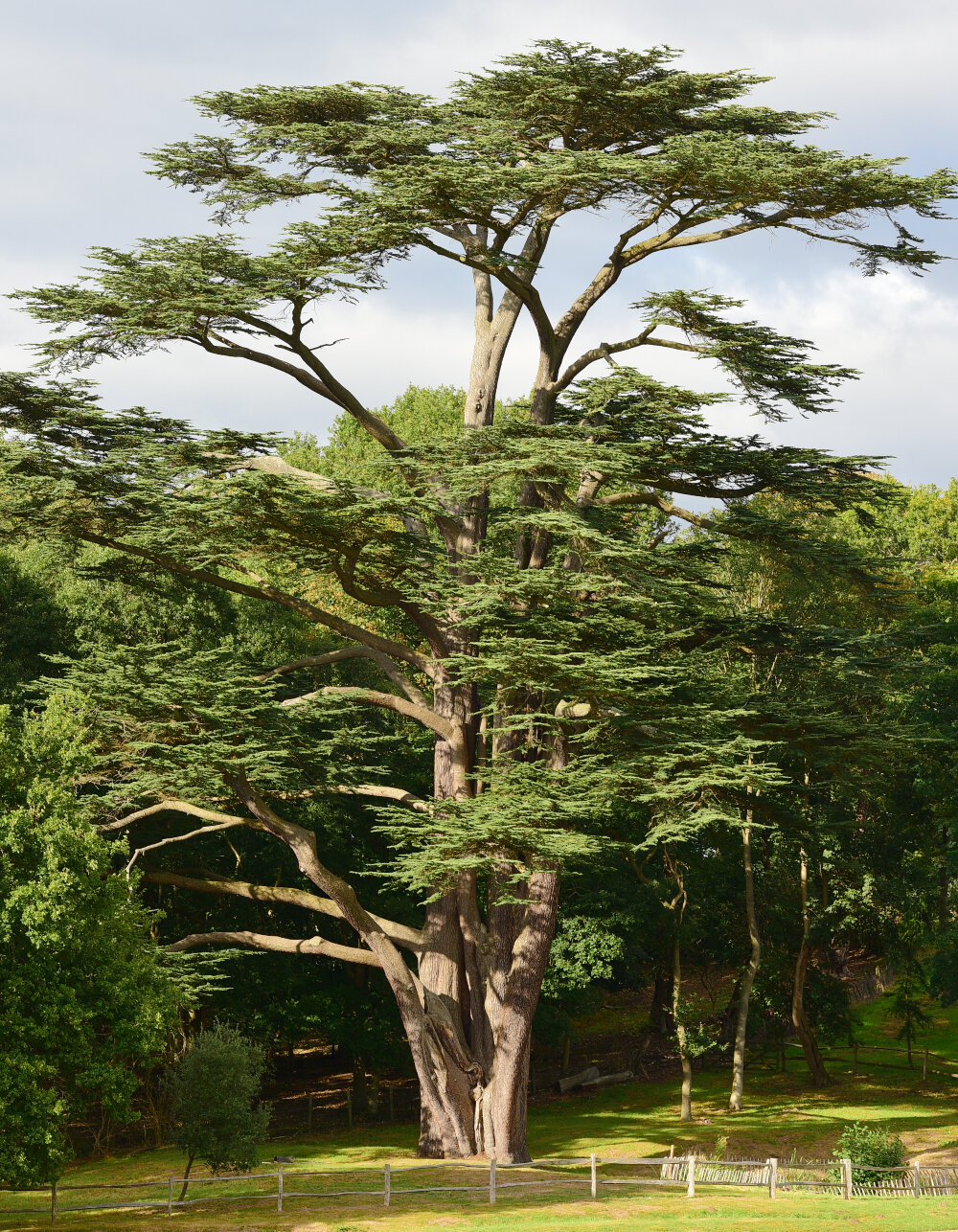My top ten garden books
It’s winter. I’m not a great one for curling up by the fire with a seed catalogue. They’re usually very wordy, short on pictures, with anodine sowing and cultivation notes. A book about gardens, or plants, plant hunting or gardening however, is much more cup of tea. But so much depends on the author and, naturally, the photographer.
First off, the books I use the most for my work. No, they are not technical tomes about soil composition of how to haunch the edge of a patio, but primarily books about plants.
The most thumbed book on my whole bookshelf is Right Plant Right Place by the late Nicola Ferguson. The phrase was first coined by Beth Chatto, if you plant something in the best possible position for it it (almost) can’t fail. And the most referred to chapters are those about planting in shade. London gardens are notoriously shady, be they in the shadow of tall buildings, neighbours’ trees or even their own fences. Every garden has got a slightly unloved corner where it would seem almost nothing will thrive. Beth Chatto might have had the number on planting under trees in her Woodland Garden book, but Nicola trumps her when it comes to dry shade and dense shade. Other valuable chapters are on plants for heavy clay soils and long flowering perennials.
Once I’ve made a selection for a garden I like to have a quick look at Christopher Lloyd’s Garden Flowers. No glamorous photos here but at times quite a witty take, and 70+ years of experience, on the delights or failings of many popular garden flowers. Recently, in looking for spring bulbs for a client I came across his description of Camassia quamash, “whose Indian (native American) name, quamash, indicates their edibility with its onomatopoeic, scrunching sound.” He admits to making that up but thought it should be true. Not that I agree with him all the time, one of my favourite flowers, the bright blue Catananche caerulea, is described as “a mildy pleasing but second-rate plant.”
The third of this trio of reference books is Barchams Time for Trees. Barchams is the tree supplier to the King, and the Queen before him. Obviously there’s some self-interest in this book and I was given it for free at a trade fair. However, it has lots of photos and good descriptions of hundreds of garden trees. It is particularly good at describing many different culitvars, I can’t tell you how useful this is when eyeing up several different varieties of cherries or magnolias say. It’s much easier to compare and contrast with a book than it is online.
Now for a bit of garden writing. I’m reminded of the quote that “writing about music is like dancing about architecture” and so how can writing really convey to the reader anything about a garden? The answer is, in the way that detective novels are fascinating but do not reveal the true awfulness of a murder, garden writing is enjoyable without actually having to get dirty or cold and wet or do your back in or weed that border for the nth time … Here are three that I’ve really enjoyed.
Back in the day when people actually wrote letters, and complete sentences, Christopher Lloyd and Beth Chatto enjoyed a very lengthy correspondence. Subjects ranged from writing about their own gardens, each other’s gardens, lots of other gardens, lots of (to my mind) unfathomable advice and there’s some terrific name-dropping thrown in too. The resultant book, Dear Friend and Gardener, is so good I’ve got two copies.
Sadly it seems most of the writers featured so far are no longer with us. Both Christopher Lloyd and Beth Chatto lived to ripe old ages at least, proving that gardening is indeed good for you. Elspeth Thompson, in the ordinary course of events should still be alive, but she suffered from depression and took her own life at the age of 49. Gardens can’t heal all it seems. She left two books, the first of which is The Urban Gardener, three years of Telegraph columns about the trials and triumphs in her garden and allotment in inner city London.
This brings me to my third choice for garden writing, Sue Stuart-Smith’s The Well-Gardened Mind. Sue is married to the Tom Suart-Smith (more of him later) and is a psychiatrist. In an age of well-ness, biophilia and other 21st century tropes, here is an evidence-led exploration of not only why gardening is good for you, but how gardening is good for you. Thankfully this is not a self-help book but is rewarding and uplifting with lots of case studies.
The final group of books are ones I turn to in need of inspiration or just a dose of garden porn if you like. None of these bears any relation to either my own garden or indeed the suburban gardens I design. I can but dream…
First up, Tom Stuart-Smith’s Drawn from the Land. Beautiful gardens and beautiful photography. The gardens range from award winners at the Chelsea Flower Show, London courtyards, country house gardens, a Moroccan paradise garden, arid Mediterranean hillsides and many gardens open to the public. I’ve been lucky enough to see a few of these in the flesh and he never disappoints.
Another monograph I’ve enjoyed is The Gardens of Arne Maynard. Much more associated, in my mind at least, with the gardens of ancient houses and landscapes. Unashamedly romantic and definitely not low maintenance, he particularly favours old fashioned roses, topiary and often features bucolic kitchen gardens. I’ve also seen a couple of his gardens, including his own in Monmouthshire which is one of my favourites. The photography, mostly by William Collinson, is lovely.
This next one is a bit left field and never in my wildest dreams would I ever be asked to design anything in this sort of landscape, let alone with this level of style and minimalism. The Desert Gardens of Steve Martino are designed and built in the semi-desert-like region of south-western USA. An early pioneer in the use of native plants adapted to the arid landscapes which are sometimes subject to heavy downpours, his gardens use walls to construct views and create privacy to making beautiful minimlaist outdoor rooms. If you want to see gardens which are the complete opposite of, say, Arne Maynard, this is the designer to look at. Fabulous photography by Steve Gunther.
My last choice, published earlier this year, is Wonderlands. Written by Claire Coulson and photographed by Eva Nemeth, it is an exploration of the gardens of some well-known and not so well-known British garden designers. I was in two minds about including this book as mostly I feel deep seated envy when I look at this book. Included are the gardens of Tom Stuart-Smith and Arne Maynard. Interestingly, few of these designers admit to having any plans for their own gardens. They’ve taken a more experimental and leisurely approach, unpressured by a deadline or a budget or a client brief. Even so, there are deep echoes of their professional work in their own gardens.
The joy of allotmenteering
Every summer our group of park gardening volunteers organises a walking tour of some of our own gardens. This summer we visited two allotments gardened by three of our group.
Allotments seem to be a uniquely British institution. Small areas of land are rented, usually from the local council, to grow fruits, vegetables and plants. Some people keep bees and hens and grow flowers for cutting. Allotments can vary in size but usually measure ten rods or poles, which is around 250 square metres.
Allotments have their origins in the late Anglo-Saxon/early medieval period when large fields were divided into thin strips for individuals or families to grow crops. This was known as the open-field system.
By the late 1500s these fields were divided up to be used only by the owner. They were then enclosed through a series of Acts of Parliament. In compensation, ‘allotments’ of land would be attached to tenant cottages - the first written reference to allotments in the UK.
Allotments as we know them today stem from the General Enclosure Act of 1845 that made provision for ‘field gardens’ to be used by the landless poor—although very little enclosed land was actually set aside for this purpose. The later ‘Small Holdings and Allotments Act’ of 1907 and 1908 imposed responsibilities on councils to provide allotments if there was a demand for them.
There was a huge increase in allotment use during the First and Second World Wars due to the shortage of imported food. Disused railway land, public parks and private gardens were all used to grow fruit and vegetables. The ‘Dig for Victory’ in the Second World War produced 1.3 million tonnes of food from 1.5 million allotment plots.
There was a steady decline in allotment use after the wars but this slowed during the 1970s when TV shows like the BBC’s The Good Life inspired interest in food production and self-sufficiency.
Since the 1990s, there has been a lot of renewed interest with concerns about climate change and foodprovenance, and the benefits of spending more time outside means that demand has rapidly oustripped supply.
The waiting list for the allotments in these photos can be up to eight years. Increasingly there is pressure to change the use from allotments to housing. Recently there has been an increase in the number of private allotments. The cost of these is significantly higher than council-owned ones.
In Merton there are only three council owned allotments and new applications are no longer being accepted. From the statistically insignificant sample of the one allotment site I visited I would say around 20% of the allotments looked they had been abandoned.
It seems to take a long time for these to be declared available for new users. Allotments can deteriorate quickly, becoming invaded with pernicious weeds (and wildlife). It can take six months of hard slog to clear the ground of brambles, bind weed, even himalayan balsam, requiring a lot of determination to keep going.
On the plus side you may inherit established perennial plants such as fruit trees and currant bushes. You may also inherit the shed (every allotment has one) in any state of repair, and assorted accumulated allotment accoutrements such as old baths, gazillions of bamboo poles, untold plastic pots but also greenhouses, paths, edging and well-rotted compost.
Many people take on allotments as they’d like to grow their own food. However, it is apparent that the community of allotmenteers keeps people going. There is lots of advice (whether you want it or not), community get togethers and community resources to share (the wild blackberries and large manure heap here spring to mind).
To the causal observer allotments can look a bit of a mess. Allotmenteers are nothing if not thrifty and resourceful, making use of many household items that might otherwise be thrown away. However, they are also havens of peace and quiet, full of wildlife (mostly welcome…) and provide a much needed escape from urban life.
Long live allotments!
Waterperry Gardens
Waterperry Gardens, in Oxfordshire, is a veritable cornucopia of all things horticultural, edible, cultural and shoppable. The gardens themselves are extensive and would need a visit of several hours to do them justice.
The Truth Trail
The Gardens rose to fame in the middle of the 20th century as a residential horticultural college for women run by Beatrix Havergal (allegedly the inspiration for Roald Dahl’s Miss Trunchbull). The college closed on the death of her life and business partner, Avice Sanders, in 1971.
The Herbaceous Border
Beatrix and Avice originally founded the school in 1921 at Pusey House in Oxfordshire and moved to Waterperry Gardens in 1932. At the time it was rented from Magdelen College.until they bought it in 1948. All students paid their own fees until 1958, when scholarships were granted by some county councils. The diploma was accepted as one equal to those issued by Kew and Edinburgh. Beatrix was awarded an MBE in 1960 and the Royal Horticultural Society Veitch Memorial Medal and Victoria Medal of Honour in 1965. For many years Beatrix won gold medals for her strawberries at Chelsea Flower Show.
The Herbaceous Border
The property was bought by The School of Philosophy and Economic Science in 1971. Beatrice and Avice’s garden has been maintained as they knew it and it has also been extended in scope and content, although it is not clear what is original and what is new.
The canal
The gardens are large and quite varied. You are guided into the gardens along the Truth Trail, over a bridge and through light woodland. Under another bridge the long herbaceous border suddenly appears. It is banked up on oneside alllowing plants to tower over the pedestrian.
Silent Space
The Formal Garden was created by Bernard Saunders and Mary Spiller, a former student and then tutor at Waterperry Horticultural School. The sculpture, Girl holding the Lamp of Wisdom, is by Nathan David. It is a Silent Space, part of a network of gardens of where people can be silent and switch off from the outside world and to take time to reflect.
The Colour Border
The Colour Border
I particularly enjoyed the Colour Borders - these colour co-ordinated mixed borders make use of perennials, shrubs, bedding and bulbs to give all year round colour and interest.
Modern Border
Modern Border
The Modern Borders look good at the end of summer with grasses and later flowering perennials. The wavy edges are reminiscent of the 1970s.
Walled Garden
Walled Garden
Walled Garden
The Georgian Walled Garden has been recently made over as a cutting garden. The deep borders of Dahlias are pretty spectacular as are the beds of colourful annuals. I managed to miss The Mary Rose Garden, Yew Henge and orchards - more to see on another visit, perhaps in the spring.
Beyond the gardens there is a nursery, shops of varying descriptions, art gallery, museum, cafe and outdoor theatre. I didn’t have time to try the cafe. It would be worth taking a picnic as its a long walk to the cafe if you want refreshments part way through your visit.
Nymans
I think Nymans might be the first National Trust property I’ve been to where its all about the garden rather than the house. The garden is grade II listed, and the house is mostly a ruin.
View of the house from the South African bed
The 600 acre Nymans estate was bought by German emigre Ludwig Messel in 1879 and was occupied by his descendants, even after the devastating 1947 fire. It was handed over to the National Trust in 1953.
The summer borders
Unlike many houses devastated by fire this one has been left standing. It’s been cleverly planted with architectural and evergreen plants lending it the air of a gothic folly.
Architectural and evergreen exotic planting
If you go on the walking tour they will take you into a newly planted part of the great hall. It references Oliver Messel, the theatrical designer and Ludwig’s grandson, with corten screens and architectural planting, all in containers.
Tetrapanax, Cordyline and Wisteria
Yew topiary againt the house
The Forecourt Garden in front of the house is planted with topiary and naturalistic looking borders. In one corner is an attractive stone dovecote.
Achillea and scabious in the Forecourt Garden
Naturalistic planting in the Forecourt Garden
Topiary in the Forecourt Garden
The Dovecote
Ludwig Messell and his head gardener, James Comber, were avid plant collectors and breeders. The garden hosts many plants from the southern hemisphere, notably from Chile and Argentina. A large part of the garden is dedicated to plants from South Africa such as Dierama, Kniphofica, Berkheya, Watsonia and several Restios.
Berkheya and Dierama in the South African bed
The Rock Garden
The Rock Garden and lookout
The Rock Garden is a bit more rock star than your average 1970s effort, not least because of its scale. Aside from the expected heathers (many different varieties) but many Mediterranean plants like Santolina, Phlomis and the odd Trachycarpus thrown in for good measure.
The Rock Garden and Croquet Lawn
This is one of the very few National Trust gardens that I have really enjoyed. It is definitely worth another visit to see the Rose Garden, wildflower meadows, Wild Garden and the Wall Garden, all a bit earlier in the summer. The Pinetum is a really good example of its kind as well.
There are lots of opportunities for refreshments if you are not bringing your own picnic. I’d say it is one of the better NT cafes as well. Oh and there’s an excellent secondhand bookshop, definitely worth a look.
Le Chateau du Lude
On a short holiday in the Loire region of France I convinced myself there must still be a hidden gem of a garden that I hadn’t visited.
Le Chateua du Lude
Having done Villandry, Chaumont and Chenonceau I had to travel north to the banks of the other Loire valley river, Le Loir, and Le Chateau Du Lude.
Rose Garden
Le Lude is the most northerly château of the Loire Valley and has been inhabited by the same family for the last 260 years. The gardens have evolved to combine French design and an English-style landscape, with a rose garden, topiary, a labyrinth and a botanical walk. And an unpublicised organic kitchen garden.
Lower Garden
The lower garden running along the river, was the original vegetable garden. This was moved further away to create a romantic French-style garden designed by Edouard André a renowned landscaper in the 19th century. Parterres of flowers and ponds succeed each other, with scented flowering shrubs like chimonanthus, lilac, philadelphus and calycanthus along the wall.
The fields opposite were planted as a landscape park.
Lily pond in Lower Garden
The spring garden is full of early perennials but these were mostly over at the time of my visit in June.
Fountain in Lower Garden
Le Loir from under a copper beech
So far, so French. Not too much in the way of flowers or colour after the slightly past-it rose garden. And then I noted there was a kitchen garden.
The Kitchen Garden
It was midday as I arrived as the gardener was locking the gates to the obviously “prive” kitchen garden. Somewhat crestfallen I mustered a smattering of pidgin French to explain I was a garden designer and just wanted some photos. Eager to get to his lunch he opened the gate for me and asked me to lock it when I was finshed. I can’t imagine the National Trust doing that.
A mixture of flowers and fruit and weeds, well it is organic..
Fruit trees in the Kitchen Garden
Sisyrinchium striatum, phlox and California poppies
Orangery, used as a tool store
The Kitchen Garden was the most floriferous part of the gardens, the informality of the planting here is in stark contrast to the more formal areas elsewhere.
Birdbox in the kitchen garden
I would say the garden at Le Chateau du Lude wasn’t quite the hidden gem I was hoping for. Having said that I spent a pleasant couple of hours here. It’s not as busy as all the better known gardens in the Loire and I was grateful for that. There are no refreshments available so you’ll need to bring your own. And, of course, it’s not open at lunchtime…
Website https://www.lelude.com/en/
Project Giving Back - Chelsea 2024
In any other year a damp, grey day at the Chelsea Flower Show would have been unusual, not in 2024 though. Whilst most humans aren’t that happy in the rain, gardens absolutely love it. Colours are more vibrant and plants look much fresher.
The Octavia Hill Garden by Blue Diamond with the National Trust
In recent years there have been far fewer large show gardens on the main avenue, and now all are sponsored by charities rather than big corporates. This is in no small part as a result of Project Giving Back.
The WaterAid Garden
“Project Giving Back is the vision of two private individuals who want to support a wide range of charitable causes whose work suffered during the global Covid-19 pandemic and continues to be affected by the economic downturn and cost-of-living crisis.
World Child Cancer’s Nurturing Garden
The grant-making scheme gives UK-based charities and other charitable organisations the chance to apply for a fully-funded garden at the RHS Chelsea Flower Show, subject to the usual RHS selection process. This is a unique opportunity for charities to raise awareness of and support for their work at the world’s most famous horticultural event.”
Muscular Dystrophy Garden
The first Chelsea Flower Show to benefit was in 2022, and 12 gardens were supported. The most well-known of these was the best in show garden by Lulu Urquart and Adam Guinness - remember the controversial re-wilded garden for beavers?
The National Garden Scheme Garden
Most of the plants from this garden (there wasn’t a lot of hard landscaping) went to the Lindengate garden in Wendover, Buckinghamshire. This mental health charity uses its six acre garden to provide social and therapeutic horticulture to people of all ages.
Terrence Higgins Trust Bridge to 2030
A further 15 gardens were supported in 2023, including another best in show winner, Horatio’s Garden, designed by Charlotte Harris and Hugo Bugg.
St James’s Picadilly: Imagine the world to be different
Horatio’s Garden is a charity set up to provide gardens for people with spinal injuries and the show garden has gone to the Princess Royal Spinal Cord Injuries Centre in Sheffield, opening later this year.
The Anywhere Courtyard
In 2024 another 15 gardens were supported, including yet another best in show garden, the Muscular Dystrophy forest bathing garden designed by Ula Maria. This garden will be relocated to The Prince & Princess of Wales Hospice in Glasgow.
mgr Changing Tides Garden
It’s quite a complicated process moving a show garden to its final home. Inevitably there is an element of redesign to fit the new space and in the meantime both the hard landscaping materials and plants may have to be stored before they can be re-used. Some new elements may be incorporated as Chelsea Show gardens are for May, not really for 12 months of the year.
Stroke Association’s Garden for Recovery
Project Giving Back is scheduled to continue for a further two years. It’s a good fit with the RHS’s ethos of sustainability and trying to keep the Chelsea Flower Show as green as possible.
Sue Ryder Grief Kind Garden
Project Giving Back also provides support for garden designers, helping those with a good idea find a charitable partner to link up with, and it also helps newer designers get into Chelsea for the first time.
Bowel Research UK Microbiome Garden
All good things usually come to an end though, so how will the RHS find sponsors with pockets deep enough for a £250,000 show garden once Project Giving Back ends after 2026?
Isabella Plantation
It’s very easy to visit Richmond Park regularly and completely miss the Isabella Plantation. The deer are kept out of this part of the park, allowing for a wide variety of trees and a more garden-like feel.
Principally a woodland garden, it is in spring that the many flowering shrubs and trees come to the fore. There are witch-hazels, camellias and magnolias in early spring. In April and May it is the turn of azaleas and rhododendrons. Get ready for a technicolour tour.
The garden is home to the National Plant Collection of Wilson 50 Kurume Azaleas, introduced to the west from Japan in the 1920's by the plant collector Ernest Wilson. If you want to identify them all this website has the definitive list.
The Isabella Plantation sits in a natural dip and running and still water throughout is a major feature.
Most of the water features are man-made, water is pumped from Pen Ponds and the streams were dug out in the 20th century. The lower part of the Plantation is naturally boggy and the garden plants here reflect that with asiatic primulas, gunnera and this rather fantastic Darmera peltata.
Isabella Plantation has been subject to some significant investment in recent years. Ponds have been cleared of silt, the remaining invasive Rhododendron ponticum has been cleared out, along with rampant skunk cabbage. And the paths and loos have been upgraded. If you’ve got a blue badge you can park very close by and all the paths are acessible with a wheelchair. Dogs on leads are allowed.
Most people know that I’m not a big fan of rhododendrons, particularly in smaller gardens. Where they’ve got space to do their thing though they look majestic. I like seeing them in dark groves where they can look moody and mysterious, particularly on a gloomy day.
And just occasionally you come across some very delicate flowers, completely different. Unfortunately I cannot find the name of this one.
Crocus time
when you come across a lawn of crocuses in their tricolour array of white, yellow and purple it can stop you in your tracks
I used to be a bit dismissive of crocuses, not really worth the effort I thought. But an amazing display in my local park last year changed my mind.
Snowdrops are exciting because there’s almost nothing else in flower at the time. But they’re white and you have to get down on your hands and knees to see them. Don’t get me wrong, I think it’s worth the effort, but when you come across a lawn of crocuses in their tricolour array of white, yellow and purple it can stop you in your tracks.
Crocus Pickwick
Crocuses are easy to grow. They don’t mind sun or a bit of shade, as long as the soil isn’t too wet in winter. They do well under deciduous trees as the have finished flowering by the time the trees have leafed-up. They also look good in grass and as they die back earlier than daffodils they don’t interrupt your mowing regime as much.
Crocus tommassianius Barr’s Purple
Although crocuses are very tolerant of the vagaries of British weather they will only open up in the sun. They are an early source of nectar and are magnets for bees on warm sunny days. And they can have a tendency to keel over in heavy rain.
Introduced to Britain by the Romans, the saffron crocus, Crocus sativus, was used as a dye. There are over 200 named varieties of crocus. Their taxonomy (classification) is complex and has changed many times since the Romans.
We are used to seeing crocus as small bright pops of colour in our gardens but some gardens showcase them in style by planting literally thousands (maybe hundreds of thousands). One of the most magnificent spectacles is at Ham House in London.
Ham House gardens
Ham House gardens
Even the most meticulous plans can experience the odd hiccup however.
Ham House gardens
If you haven’t got acres to show off your crocuses they look pretty good in pots, especially when combined with other early spring bulbs. I found all these at Sissinghurst just before the first lockdown.
Crocuses also come in yellow by the way, I just don’t seem to have many photos of them.
The cooler weather means crocuses will still be looking good for a couple of weeks yet. Some good places to see them:
Ham House - free with a National Trust card
Sissinghurst - also National Trust
Kew Gardens - naturally
Inkpen Crocus Field in Berkshire
2023, a year in photos
I googled “what will 2023 be famous for?” There were some forecasts - war, climate catastrophe, financial turbulence and technological change - so far, so predictable. But a fashion trend for blackened teeth thankfully hasn’t come to pass (or did I miss it?).
Wimbledon Common in January
The year started with a famously cold January. It was a near record of eight days in a row of freezing temperatures. Whilst Wimbledon Common looked fab in the heavy frost the weather took its toll in the garden. Many people lost plants, in particular Hebes, Erigeron karvinskianus and Penstemons. They were hard to replace initially as the frost had affected so many gardens as well as suppliers in the UK and Europe.
Cyclamen at Wakehurst Place in February
One answer to this is to plant a winter garden, full of plants that look their best at this time of year. I went to visit Wakehurst Place which has a fairly new winter garden. It didn’t disappoint and partly as a response to this we have developed a couple of winter borders in my local park.
Magnificent magnolia in Bushy Park in March
A persistent easterly wind in March and April meant that spring felt like a long time coming but finally, after a few false starts, I got on a plane for the first time in three years to go to the garden island of Madeira.
Fanal Forest, Madeira, in April
There were gardens aplenty on the island but one of the most fascinating sights was the ancient laurel forest on the north slope. Subject to frequent fog and mist the trees were already mature when the Spanish arrived in the 14th century. It is an eerie place and, as I found, it’s very easy to get lost.
Bluebells in the Surrey Hills in May
May was a busy month. The weather warmed up a little and I found a great new bluebell wood in the Surrey Hills. The sun also came out for the Chelsea Flower Show and there was only one garden everyone was talking about - Sarah Price’s iris garden. It wasn’t overrated, almost worth the ticket price on its own.
Chelsea Flower Show in May
Also in May I finished planting a new garden in Wimbledon. Throughout the year I have continued as a volunteer gardener in my local park. Luckily the summer wasn’t quite as scorching as 2022. The ox-eye daisies in a wildflower part of the park were stunning in June.
Ox-eye daisies in June
All through 2023 I have been learning how to use a 3D design software package. It has been challenging to say the least but considerable progress has been made. I’m not sure I’ll ever reach guru status, but it’s good to get to a stage where clients can see their prospective gardens in 3D and even walk through them. I haven’t had a client yet say they prefer the old hand-drawn way of doing things.
Cedar greenhouse in July
In July I caught up with a friend who I’d helped with the layout of her garden ahead of the installation of a new greenhouse.
Waterperry Gardens in August
In August there was an overload of garden visits to Ham House, Waterperry Gardens and the best garden I’ve seen in a long time, Le Jardin Plume.
Le Jardin Plume, Normandy in August
Whilst in France I also visited the garden festival at Chaumont and the formal gardens at Chenonceau.
Chenonceau in September
Autumn took a long time to arrive, an unexpected heatwave followed by what seemed like endless rain, and then finally, some spectacular colour. Piet Oudolf describes a fifth season, somewhere between summer and autumn. The garden at the Hepworth Wakefield is a great example of how good a garden can look at this inbetween time.
Allium sphareocephalon and Perovskia in October
And my photographic year ends there, somewhat abruptly. The big camera is out of action and the camera on my phone doesn’t really cut it as a replacement. Normal service will be resumed shortly, hopefully in time for some winter photography.
Gifts for gardeners
It’s back, the only reasonably sensible list for gardeners of all types, no cashmere pyjamas or pink suede gauntlets here…
These are two of my favourite coffee table purchases of the year. I enjoyed my visit to Le Jardin Plume so much I bought the book. Yes it is in French but you don’t need to be fluent to get the gist of what’s going on. The photos tell the story, and the photos are fab.
I’ve been going to Kew Gardens since I was knee high to a grasshopper but only went into the Marianne North Gallery for the first time earlier this year. All of the 627 paintings - part botanical illustration, part travelogue - are reproduced here. Marianne North visited 13 countries and four continents in the second half of the 19th century and she paid for the construction of the gallery to house all her paintings. A major vanity project? And so what.
Sarah Price’s garden at the 2023 Chelsea Flower Show
Well no list is complete without a ticket to the Chelsea Flower Show. Is it expensive, is it over crowded, is it worth it? Hell yeah. The RHS runs one or two other shows which are all a bit cheaper, a bit less less busy and, well, you get what you pay for….
Looking for an easy way to boost your garden’s attractiveness to wildlife? Just add water. Birds, insects and mammals will all find a small pond very appealing. It doesn’t have to be deep, or have a fountain or even require digging a big hole.
A shallow water bowl or bird bath will do the job. A few pebbles and a couple of plants will finish it off nicely.
West Green House gardens and caff
Who doesn’t enjoy a nice garden visit with a fabulous lunch thrown in? Top of my list is Gravetye Manor (still waiting..), The Newt was fab and the cafe at West Green is a little more modest but no less tasty.
The restaurant at The Newt
Most gardeners are suckers for tools, especially really good quality ones. I’ve mentioned Felco secateurs before, as well as Showa 370 gardening gloves, Silky Fox folding saws, Hayter lawnmowers and Henchmen ladders.
Fab even when not in use
And they also love seed trays, garden twine, small terracotta pots, compost (but so awkward to wrap…), magazine subscriptions, bird boxes, seeds and cake of course.
Cedar greenhouse
But nothing says I love you like a bespoke cedar greenhouse…
And finally, what not to buy a gardener unless they have specifically asked for it - a plant. You have no idea how difficult it is to accommodate a rose that’s the wrong colour, or an inappropriately sized tree, into a carefully curated garden.
RHS Harlow Carr
A visit to Yorkshire to see friends meant a long-awaited trip to the RHS garden at Harlow Carr.
Harlow Carr
It’s a much more compact garden than Wisley, making it much easier to get around and see almost all of it. The garden was looking pretty good in the very bright and low autumn sunshine (not ideal for photography). It was a bit too early for good autumn colour in the arboretum but there was plenty going on elsewhere.
Aconitum
The long herbaceous borders were still looking colourful. I expect the very warm September had a lot to with extending the season.
Verbena bonariensis, Rudbeckia and Kniphofia
Persicaria
There’s a small stream running through the gardens and just uphill from this is a more traditional mix of shrubs, small trees and perennials, all looking great when back-lit with the low sun.
Hakonechloa macra
Astrantia major
Dawn redwood
Eryngium seedheads
Sidalcea
One of the things that surprised me and my southern view up gardening up north is how successful the salvias were. The gardens seem to showcase a lot of different varieties, from the stauesque Salvia Amistad and S. guaranitica Black and Blue, to the more shrubby Salvias such as Hotlips, Nachtvlinder and others I did not recognise. Who knew thse natives of the Americas, thought to be tender and prone to frost could thrive in this environment?
Salvia guaranitica Black and Blue
Shrubby Salvias
There was also a tropical garden, full of bananas, the regular Musa basjoo and the Ethiopian variety Ensete ventricosum. Admittedly these were accompanied by many coloured foliage plants like Coleus and the autumn colour of Cercis and Dogwoods. My friends are tasked with finding out if the bananas are left in all winter.
Tropical garden
Towards the lowest point of the gardens there is what looks like a white border. In autumn the grasses are the highlight, but I would like to see it when more of the perennials are in flower. The only flower on show in October was this stately Leucanthemum.
Leucanthemum in the white border
Harlow Carr is just outside Harrogate so it is no surpise to find all the catering is provided by Bettys. The queues are long so take a flask or do as I did, and get a friend to wait in line (thanks Rachel…).
Autumn colour
Harlow Carr - the gardens are open every day except Christmas Day
Bettys - they say there’s no need to book for the tea rooms but the long queues suggest otherwise…
The Hepworth Wakefield Garden
I was not overly hopeful of enjoying the Hepworth Wakefield Garden. Often gardens that seem good looking on social media are somewhat disappointing in real life. And the long journey up the M1 had been dreary and wet, compounding my low expectations.
The Hepworth Wakefield Garden
So it was a really pleasant surprise to find that it was all it was cracked up to be and, not only that, the sun came out just as I arrived.
The garden was designed by Tom Stuart Smith and according to thee garden’s website the “design draws inspiration from its unusual setting between 19th-century red-brick mills and a 21st-century art gallery. It echos the striking, angular shapes of the David Chipperfield-designed gallery while harnessing a naturalism that reflects Barbara Hepworth’s deep connection to the landscape.”
Rhus typhina and Aconitum
Construction began in 2019 and is planted with 14,000 perennials, 120 metres of beech hedge, 52 trees and shrubs and 60,000 bulbs.
Rhus typhina and grasses
In autumn the main features of the garden are the brilliantly-leaved Rhus typhina, grasses and various asters, all looking really good backlit by low autumn sun. I can’t say that Rhus is a favourite plant of mine, it has a tendency to sucker and spread, but in autumn the colour is hard to beat.
Rhus typhina
Phlomis russeliana seedheads
Asters and Echinacea seedheads
I sometimes find it hard to persuade clients that it’s worth planting for autumn colour and form. Despite the much-lauded value of grasses and seedheads it’s not until people see gardens like this in autumn that they become convinced.
Pennisetum and Salvia (formerly Perovskia) Little Spire
Back-lit grasses and asters
Euphorbia and Echinacea seedheads
More grasses and asters
One plant I was delighted and surprised to see in a public garden was the bright blue Aconitum. I’m not sure which variety it is but it’s stunning in the half shade under an oak tree. Most Aconitum are poisonous and although some have AGM status they should always be handled with care; ingesting even a small amount can make you seriously unwell and can cause death. Here it is placed well back in the border and does not overhang the lawn or paved areas.
Aconitum, to be handled with care…
There is a small cafe in the garden (closed when I was there) and a cafe inside the gallery. The garden is free to enter, though you do have to pay for parking close by on the other side of the River Calder.
Sculpture by Michael Craig-Martin
Long view
Fading into beautiful light
It was well-worth the long schlep up to Wakefield (on my way to meet up with friends really…) and proved every bit as good as it looks on Instagram - @katymerrington. It is beautifully maintained by cultural gardener Katy Merrington and a team of volunteers.
Ham House
It’s been a few years since my last visit to Ham House. This time, amazingly, I went in the house and had a quick whizz round. Lots of paintings and tapestries, fab windows and staircase and really good views of the surrounding 30 acres. Mature trees mean you can’t see the Thames even though it’s only a stone’s throw away.
Father of the Thames in Coade stone
Ham House was built in 1610 by Thomas Vavasour, an Elizabethan courtier to James I. It was then leased, and later bought, by William Murray, a close friend and supporter of Charles I. The house achieved its greatest period of prominence following his daughter Elizabeth's second marriage—to John Maitland, Duke of Lauderdale.
Agastache, Calendula and Lavender
The design of the garden was considered as important as that of the house and has a strong French influence. There are formal avenues of trees radiating out from the house and the garden is divided into a number of smaller, though still very large by modern standards, walled areas.
Statuesque Allium Summer Drummer
The property was donated to the National Trust in 1948 but renovation of the gardens did not begin until 1975. The works have focused mainly on the Wilderness, the kitchen garden, known as the Orangery, grass squares called The Plats and the Cherry Garden. In recent years there has been a concerted effort to increase biodiversity with large areas of the grounds planted with wild flowers.
Herbs planted under an apple tree
In early August the most interesting features are the Cherry Garden and the Kitchen Garden. The latter is the most recent to be renovated and the focus is on producing fruit and vegetables for the cafe and flowers for the house. By no means does this cover the whole of the original Orangery garden.
The garden is laid out in a grid pattern with corners often marked with these topiaried variegated hollies and many of the paths are lined with lavender or teucrium.
The garden was buzzing with wildlife, mainly bumble bees and butterflies (I spotted Red Admiral, Large White and skippers). This pigeon was helping itself to the borage.
Bumblebee in the thyme
Hemerocallis
I don’t know if it was just the time of year or a deliberate design intention but the kitchen garden was overwhelmingly orange and purple - Hemerocallis, Calendula, Dahlias, Lavender, Agastache, Teucrium, Salvias - and it was very effective. The orange-red brick amplified the effect.
More Lavender and Calendula
In contrast, the Cherry Garden is a lesson in restraint, definitely a less is more approach. Although the layout of pleached tree avenues and parterre of box topiary and lavender is very 17th century French in style, all is not as it appears.
Box topiary, just trimmed
Archeological investigations in the 1980s showed no signs of a formal garden on this side of the house. Happily the National Trust has decided to keep this as a formal garden rather than be puritanical about keeping to the 17th Century design.
It is a designated as a quiet space and the limited palette of plants - pleached limes, yew hedges, box topiary and lavender - was very restful and quite modern in feel. The structure and evergreens mean this would still be a still place even in winter.
The slanting sun in late afternoon in the second half of summer gave all the edges a silvery glow, almost, but not completely, caputured in my photos.
I didn’t try the cafe although it looked very nice, situated in the kitchen garden. No doubt the fare is standard NT stuff.
There’s also a second hand bookshop (quite good, but not as extensive as the one at Mordern Hall Park). There seemed to quite a few outdoor activities for children but most seemed to be having fun just running around.
There’s parking at Ham Street Carpark or you might get lucky and park for free on Ham Street. It’s a bit of a schlep from a railway station.
If you’re out for the day you’re just a short walk from The Palm Centre (access via Cut Throat Alley….). and Petersham Nurseries (more restaurant than nursery).
Thanks to Wikipedia for a potted history.
Chelsea 2023 - Sarah Price's Garden
It’s not often a show garden at Chelsea is universally popular. Despite being heavily featured on the tv coverage there were still gasps of delight and audible wows as visitors saw it for the first time.
And I think this is the first time I’ve showcased a single Chelsea garden, that’s how much I liked it.
Iris Benton Susan
The most striking thing about the garden when you see it for the first time is the amazing display of Benton irises. Cedric Morris was an artist and also bred irises ast his Suffolk home, Benton End. “Cedric Morris was famous for his flower paintings and iris still lifes. You can see that he really understood the plants, but he was also an incredible gardener, who influenced Beth Chatto. He introduced 90 different cultivars of bearded iris,” says Sarah.
Iris Benton Olive and Aeonium Zwartkopf
The irises, like the garden at Benton End, languished for many years. A former head gardener at Sissinghurst, Sarah Cook, began the long process of hunting them down and breeding them, a process which is now carried on by others.
Like all the gardens this one has had to prove its environmental credentials and the builders claim it has the lowest carbon footprint of any garden at the show. All the materials are found and/or recycled and much of the garden will be relocated back to Benton End at the end of the show.
Rosa x odora mutabilis
This garden is about much more than the irises however, It is also an evocation of the old garden at Benton End. Other plants such as the trees and grasses are designed to appear semi-wild. The colour palette of pink, blue and yellow is taken from two of Cedric Morris’s paintings (Cotyledon and Eggs, and The Eggs).
A couple of things really appealed to me: the overall colour palette which is muted but has depth too, and changes colour in different light; and the overall feeling of light and space. The only other garden which had this quality was the Transcendence garden by Andrew Wilson and Gareth McWilliam. Although there was lots to look at it didn’t feel busy or cramped, there was no need to fill every square inch of space with plants (or structures, or funiture or other stuff…).
Eschscholzia Californica Ivory Castle
Chelsea was as crowded as ever, if not more so. It’s not helped by the fact that some designers make it difficult to get a good view of their gardens, with everyone scrunched up into a few linear metres. Even Monty Don has said some of the gardens can only be viewed, and understood, from inside the garden. Some designers, in my opinion, are repeat offenders when it comes to not making their gardens fully viewable to the paying visitor. Come on RHS, please sort this out.
Yes, it’s still a good day out and just about worth the money, but it is becoming an endurance event.
Wimbledon Common in winter
It’s been a cracking winter in London, if you enjoy landscape photography. The prolonged period of frost in December, followed by the snow, produced some lovely conditions for photography. And another period of frost in January was a bonus. If this sounds like a wierd thing to celebrate, especially as every sub-zero day adds considerably to your energy bill, last winter there were no frosts at all. A whole winter of grey, wet dreariness…
“Good” wintry conditions are obviously frost and snow, ideally coupled with fog or bright, low sun. Its amazing how different the same scene can look in different conditions.
The Newt in Somerset
The Newt has been on my bucket list for quite a while, longer in fact than it has been called The Newt.
The hotel
Now an hotel and spa, it has been the home of garden designer Penelope Hobhouse and plant colourists Nori and Sandra Pope who all knew it as Hadspen House. The current owners, Koos Bekker and his wife Karen Roos bought the house, its gardens and the rest of the estate in 2013.
Apple bobbing anyone?
The house and garden have been redesigned by Patrice Taravella on a seemingly money-no-object basis. There is a huge focus on growing apples with the estate making its own fine cider. Produce from the farm and garden feature substantially on the menus.
View of the kitchen garden
The elliptical walled garden is famous and now features many heritage apples grown as espaliers and cordons within an apple-themed maze. The rest of the garden tells the history of gardening including geometric Islamic garden designs with rills, Victorian formal bedding displays, a Baroque garden to more modern grass borders, wild flower meadows and some flower gardens with colour themes as a nod to the previous endeavours of the Popes.
Islamic garden
I’ve a feeling there’s not much of the garden Penelope Hobhouse and the Popes would have known, with the exception of the Walled Garden. However, you wouldn’t know it’s a relatively new garden. No expense has been spared in using the finest quality materials from oak sleepers, wrought iron railings (miles of it), Blue Lias limestone steps (from Hadspen quarry?), an extremely large, mature cloud pruned yew hedge and mature espalier and fan-trained fruit trees.
Gourd tunnel
A couple of examples of this are the gourd tunnel, designed just to show the beauty of different varieties of gourds and pumpkins (some are netted for safety), and my favourite feature, the aerial walkway through ash and beech trees to a rather nice cafe.
Aerial walkway
And yes, even though we’d had an amazing lunch, cake was eaten - rosewater and pistachio if you’re wondering (we did at least share).
The colour gardens are some of the newer features here, with separate rooms of red, white, blue and green plants.
Blue garden
Red garden
Green garden
It was a chilly grey day in late September when we visited but the grass borders were looking amazing.
Grass garden
And the Cottage Garden was still looking good. The whole of this garden is irrigated so there was no evidence of any drought damage. And neither were there any weeds, amazing.
Cottage garden
The Newt is just a few minutes from the A303 and a couple of miles from the destination town of Bruton. It would be quite hard to fit in the Hauser & Wirth garden at Bruton if you’re just visiting for the day (we didn’t manage to see all of the garden at The Newt) and having lunch as well.
A casual visit to the Newt is difficult unless you have a very good friend who is a member and/or are staying overnight at the hotel. I’m told the hotel and spa are rather fabulous and worth every penny.
There are restuarants, cafes, a farm shop, home wares shop, cider press, a museum, a newly recreated Roman Villa, more than enough to keep you entertained for quite a while.
A big thanks to Nicola for a fabulous day out, lunch and driving all the way there and back.
West Green House Gardens
This is a garden I have visited many times and it never disappoints. The undoubted highlight of a spring visit is the mass display of tulips, principally in the walled garden.
The colour and form of the tulips is kalaidoscopic to say the least, but look closely and you’ll see there is definitely method in the seeming madness. Many of the tulips are sold by the Gardens, either as single varieties or in collections.
Despite many of the tulips being listed on the website it’s still quite hard to recognise them all.
Tulipa Violet Beauty
This is probably my favourite combination in the whole garden. It’s reminiscent of the Alice in Wonderland tea garden, although it is at the opposite end of the site.
Raspberry ripple tulips anyone?
Tulipa Rasta Parrot
In the vegetable garden the tulips are used as bedding plants. The painted plant supports add some colourful height.
At the farthest end of the garden a former topiary lawn has been replaced by this mass planting of tulips. The remaining box balls are a solid contrast to the flightiness of the tulips.
Not all of the garden is devoted to tulips in spring. The damper meadow areas are planted with narcissi and snake’s head fritillaries,.
The walled garden also contains a lot of box, outlining the formal beds and adding some height and structure. The box seems to be recovering well from box tree caterpillar.
The tea shop has two outdoor seating areas. This is my favourite, a sheltered spot with an Alice in Wonderland theme of red and white. Very nice tea and cake by the way.
Alice in Wonderland tea garden
Although this is a private garden you can enter for free with a National Trust membership card. You will have to pay £4 for parking unless you can find a spot on the road just outside the gardens.
I can’t recommend these gardens highly enough.
https://www.westgreenhouse.co.uk/
Gardening to the rescue - the Hampton Court Flower Show
It’s hard to believe things have returned to normal. Is that because our new normal is anything but? The 2021 Hampton Court Flower Show is the first of the RHS’s shows to open after nearly 18 months of cancellations and delays. There was no social distancing but you had to have proof of two vaccinations or a recent test to get in and you still had to wear a mask in the marquees and loos. What really made it feel normal though was the torrential rain, for an hour at least. It was July afterall.
The first of the show gardens we came across was Mike Long’s aptly named A Place To Meet Again. The meeting again is more to do with meeting previously used materials like scaffold boards, old taps (surely a bit too shiny to have had an earlier life?) and a water harvesting tank (oh yes I’ve got one of those lying around, I always wondered what I could use it for) than getting together with friends and family again. That said, I really liked this garden, especially the green and white plant palette, the use of the grey paving in different shapes and textures and the water harvesting tanks cut up to make a sculptural feature and a seat.
Environmental issues were to the forefront in this show - how to adapt to climate change, how gardens can improve our environment, physically and mentally, how to get started in gardening and the consequences of not taking any of these issues seriously.
Jamie Butterworth’s Feature Garden for a greener future (more about Feature Gardens later) showed how gardens and planting could evolve to adapt to wetter winters and hotter, drier summers with drought resilient plants on mounds and ditches for water run-off and damp-loving plants. From a distance the seating area looked attractive, surrounded by lush vegetation. However, my frequent gripe about show gardens is that they are designed more with tv in mind than with paying show visitors and that is definitely the case here.
In stark contrast is Felicity O’Rourke’s Extinction garden. A salvaged passenger plane (Felicity used to be an airline pilot) shows the effect of our lifestyle, reliance on a very small number of plants to feed us and exploitation of natural resources could cause a sixth global extinction. This design was the most shocking and graphic of the show gardens and was quite a talking point amongst visitors.
Tracy Foster’s Message in a Bottle garden is all about plastic, waste and how plants can be used to replace many materials. For example, the oil from flax can be used as a plastic liner alternative.
Outdoor living and the closeness to nature of Norwegian life was the focus of Will Williams’ garden. The planting and hard landscaping was beautiful, althought the feature waterwall didn’t really feature as I didn’t notice there was water pouring down it.
Back to the Feature Gardens. There were a number of show gardens that were not up for judging. These included the Cut Flower Garden above (these amazing Cosmos bipinnatus are called Velouette), Jamie Butterworth’s Garden for a Greener Future and Tom Stuart-Smith’s Iconic Heroes garden below. They are not judged because they are sponsored by the RHS.
This begs a couple of questions - why are there so many gardens sponsored by the RHS, and does judging really matter? Two of the four Feature Gardens were designed by big names in the garden industry and in all likelihood would have little difficulty in attracting outside sponsorship (or winning gold medals). Jamie Butterworth’s garden was designed to a specific RHS message I suppose and Tom Stuart-Smith’s was a sort of tribute to his career (although he has done a number of these sponsored RHS gardens in recent years).
Generally I find visitors to the Hampton Court Show are less obsessed with medals than those at Chelsea. Even to novice show visitors it is obvious which gardens are better than others. This Garden of Solitude won a bronze medal. It’s good in parts but as a whole doesn’t really deliver on the idea or the implementation. It doesn’t feel anymore peaceful than other gardens at the show, the planting looks a bit random and as for the blue wall…. So why does the RHS bother with medals at all? Surely most of the poor designs are weeded out at the proposal stage. Does the competition for gold medals result in better show gardens? What do you think?
I wasn’t that keen on Amanda Grimes’ Punk Rockery garden to begin with but I had a long time to look at it waiting for a friend to navigate the queue for the loos. Closer inspection and then looking it up it shows what you can do with an unpromising site of rubble and little money.. There is a plant for every type of soil and aspect and many will thrive on almost complete neglect. If the last 15 months have shown us anything it’s that gardening is a deeply ingrained behaviour that can be extremely rewarding. Plants will try really hard to stay alive and will grow in less than ideal conditions so why not just have a go?
My Best in Show award goes to Will Williams’ Legacy Garden for Cancer Research UK. The planting was beautiful and the message strong, emphasised by the enthusiastic staff on the garden.
One thing that’s not changed is the excruciating price of food and drink (or the lack of places to shelter in the rain). My advice as usual is to splash out on the coffee or Pimms and take your own picnic. My friend Joy’s picnic was so good a few people asked us where we got it.
Roll on Chelsea 2021.
Ramster Gardens
At the end of a very soggy October my friend Helen and I went to Ramster Gardens in Surrey. It wasn’t on a wish list of places to visit but at the end of half term week when it was impossible to book Kew, Wisley or the Winkworth Arboretum, Ramster Gardens was refreshingly devoid of booking systems, timed entries or queues.
To quote the brochure, “the gardens were first laid out in 1890 by the well-known local nurseries, Gauntlett of Chiddingfold, who created them out of oak woodland. They were famous for their interest in Japanese plants and ornaments.”
“In 1922 Ramster was bought by Sir Henry and Lady Norman, the great grandparents of the current owners. Lady Norman greatly added to the gardens and introduced many of the rhododendrons and azaleas … the garden is now home to over 300 different varieties.”
In autumn though it is the trees that come to the fore, particularly the Japanese maples, of which there are several different varieties. The guide to the trees was not available at the time of our visit so we couldn’t identify all of them.
There are a number of Japanese lanterns and other sculptures in the gardens, I liked these metal mushrooms and the cranes in the Pond.
The mature rhododendrons were also very sculptural and spooky-looking, very Harry Potter on the day before Halloween. However, my photos of them were mysteriously out of focus.
The planting around the Lake is suitably boggy and the normally unprepossessing goat willow was looking the best version of itself. The overhanging beech trees were almost at peak colour..
There are some magnificent and less common trees in the gardens - a number of redwoods, Parrottias and Liquidambars, but it was the Acers that stole the show.
The Gardens are much more compact than, say, Winkworth Arboretum, but the ponds, narrow paths, steps, sculpture and undulations and relatively low number of visitors make it a more interesting garden for my money.
Tea and pretty good cake are available at the entrance to the garden. There is some outdoor seating undercover which was useful in the drizzle. We took a picnic and were able to find a seat (the Grouse Hole) undercover in the gardens.
The gardens are open until 8 November so you’ll need to get your skates on if you want to visit this year. It’s pretty muddy so take the right footwear. Dogs are allowed.
Ramster Gardens - https://www.ramsterevents.com/visitor-information
Winkworth Arboretum - https://www.nationaltrust.org.uk/winkworth-arboretum
Some amazing photos of the Acers in the gardens - Craig Denford
Painshill Park
On a blustery afternoon at the end of September, when it was no longer summer but not quite autumn, I went to Painshill Park with friend Joy.
It’s hard to describe Painshill Park as a garden with our current understanding of the word. It is an 18th century landscape garden, inspired by the landscape painting of the time and Grand Tours of Europe.
The creator was Charles Hamilton, an MP. He purchased the land in 1737 with the express intention of creating a natural landscape with beautiful vistas and idealised ruins. Now known as the “Picturesque” style, Hamilton was a forerunner to Capability Brown.
The main feature of the Park, the serpentine lake, was created by pumping water from the nearby River Mole. All the built structures like the ruined abbey, grotto, Roman and Gothic temples, Ottoman tent and Hermitage, are fake. The Mausoleum above is based on the Arch of Constantine in Rome. The bridges are real though, thank goodness.
The Crystal Grotto was closed due to Covid 19 so it was hard to see inside. It was fully restored in 2018 with thousands of crystals, some recovered from archeological work at the site.
It’s probably no great surprise that Hamilton had to borrow heavily to fund the creation of the garden. Eventually the debt burden forced him to sell it in 1773.
The Park fell into ruin and was purchased by Elmbridge Council in 1949. Since then the Painshill Park Trust has carried out extensive renovations, including rebuilding some of the old buildings. Now the follies are fun, as they should be, and the landscape is fantastic, as it was designed to be.
The only distraction from an 18th century fantasy is the constant drone of the A3 which runs close by.
There are some magnificent trees in the Park like the Great Cedar below, purported to be the largest Cedar of Lebanon in Europe.
Hamilton planted a vineyard and apparently the white wine was passable but the red was like vinegar. You can buy Painshill Park wine in the shop. Hopefully the vintages are recent.
Somehow we managed to miss the kitchen and walled garden (I blame Joy who was map reading) which was a shame. But maybe it would have seemed a little prosaic after the magnificence of the landscape garden.
I think this is a garden that will look even better a bit later in the autumn. You can take dogs in. Pre-booking is required and although the cafe is open you have to take your refreshments outside. It’s definitely a garden for a warm, still day and a picnic or a brisk walk on a windier day.
In 2014 The Garden Museum purchased an oil painting, estimated to date to around 1780, of Painshill Park. The artist is unknown.













